James Webb Space Telescope
description: NASA/ESA/CSA space telescope launched in 2021
40 results
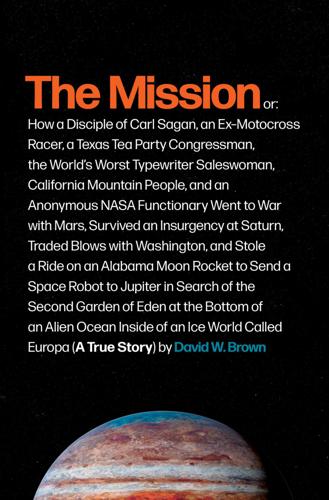
The Mission: A True Story
by
David W. Brown
Published 26 Jan 2021
Wright, October 31, 2007, oral history transcript, NASA at 50 Oral History Project, NASA, Johnson Space Center, https://historycollection.jsc.nasa.gov/JSCHistoryPortal/history/oral_histories/NASA_HQ/NAF/WeilerEJ/WeilerEJ_10-31-07.pdf. 136.NASA, “Mars Reconnaissance Orbiter Arrival,” press kit, March 2006, https://mars.nasa.gov/mro/files/mro/mro-arrival.pdf. 137.NASA, “Phoenix Landing: Mission to the Martian Polar North,” press kit, May 2008, https://www.jpl.nasa.gov/news/press_kits/phoenix-landing.pdf. 138.With apologies to Jerry Pournelle. 139.National Research Council, New Frontiers in the Solar System: An Integrated Exploration Strategy (Washington, DC: National Academies Press, 2003), 318, https://doi.org/10.17226/10432. 140.The Next Great Observatory: Assessing the James Webb Space Telescope—Full Committee, U.S. House of Representatives, Subcommittee on Space, December 6, 2011, video, 1:43.57, https://science.house.gov/news/videos/watch/the-next-great-observatory-assessing-the-james-webb-space-telescope-full-committee. 141.J. K. Alexander, Science Advice to NASA: Conflict, Consensus, Partnership, Leadership (Washington, DC: NASA, Office of Communications, NASA History Division, 2017), 89, https://www.nasa.gov/sites/default/files/atoms/files/275710-science_advice_book_tagged.pdf. 142.National Research Council, New Frontiers in the Solar System: An Integrated Exploration Strategy. 143.Ibid., 196. 144.Major Savings and Reforms in the President’s 2006 Budget (Washington, DC: Office of Management and Budget, 2006), https://www.govinfo.gov/content/pkg/BUDGET-2006-SAVINGS/pdf/BUDGET-2006-SAVINGS.pdf. 145.
…
In 2003 the rovers Spirit and Opportunity launched to get good looks at Martian soil and rocks in order to better understand the water processes at work. By now, Ed had managed to double the space science budget on such achievements before taking a job as director of Goddard Space Flight Center, a lateral move that placed him closer to his beloved Hubble and its successor in development: the James Webb Space Telescope.135 The Mars milestones, meanwhile, didn’t stop. In 2005 the Mars Reconnaissance Orbiter launched from Cape Canaveral with a mandate to map Mars in greater detail than ever before and to give planetary scientists a global view of Martian weather conditions.136 Each mission arrived successfully at the Red Planet.
…
Astronomy is expensive, and their decadal reports were a way for the field to focus on big questions and the big things necessary to answer them. It’s how astronomers came to support so effectively the great telescopes of the twentieth century—the Very Large Array, Hubble, Spitzer, Chandra—and the cornerstone of the twenty-first, the James Webb Space Telescope, which, in addition to luring Ed Weiler to Goddard Space Flight Center, had by 2006 nonupled in price, five hundred million to four-point-five billion, threatening to engulf the agency’s entire space science budget.140 When spreadsheet cells stretched ever rightward like that, the Decadals were how you kept White Houses and Congresses from losing their nerve.141 The planetary science community had no such document, and its unceasing political problems reflected this.
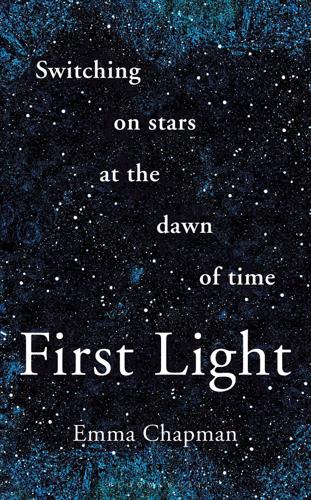
First Light: Switching on Stars at the Dawn of Time
by
Emma Chapman
Published 23 Feb 2021
I don’t understand, then, how people shoulder the responsibility of modern space missions. Take the James Webb Space Telescope,1 known as JWST. Conceived in 1996, the mission will launch at the earliest in Summer 2021, at a cost of $9 billion.1 The telescope has been in planning for such a long time that several of the technologies that it will use did not exist during the formulation stages and were invented for use by JWST. Unlike my culinary worship of the Mary Berry cookbook, those behind JWST are rather more avant-garde in the kitchen, creating delectable dishes on the fly. The James Webb Space Telescope The telescope itself reminds me of an old Transformers toy you found under the tree on Christmas morning, or perhaps an origami swan napkin on the dinner table.
…
It took me several months to spell it confidently, let alone pronounce it, and trust me when I say that no one turns up to your public lectures if you advertise it as the topic. Change the title to ‘The dark ages of the Universe and the first stars’, however, and you’re in the money.1 Reionisation We have come a long way in our search for the first stars. We have looked near, using stellar archaeology, and far, preparing to push even the James Webb Space Telescope to its limits. As we wait for further success from these fields, we can continue looking for evidence similar to the EDGES result. There, the warming of the primordial hydrogen gas pervading the Universe signalled the formation of the first stars: the Cosmic Dawn. Now we apply this idea to slightly later times and use how the first stars warm and then ionise that hydrogen to deduce their presence and properties.
…
Monthly Notices of the Royal Astronomical Society, vol. 493, issue 2: 2596–2605. 27 Simon, J. 2019. The faintest dwarf galaxies. Annual Review of Astronomy and Astrophysics, vol. 57: 375–415. Chapter 9: The Cosmic Dusk 1 www.jwst.nasa.gov. 2 www.youtube.com/watch?v=bTxLAGchWnA. 3 www.theverge.com/2018/8/1/17627560/james-webb-space-telescope-cost-estimate-nasa-northrop-grumman. 4 Surace, M. et al. On the detection of supermassive primordial stars – II. Blue supergiants. Monthly Notices of the Royal Astronomical Society, vol. 488, issue 3: 3995–4003. 5 Pawlik, A. et al. 2011. The first galaxies: assembly of disks and prospects for direct detection.
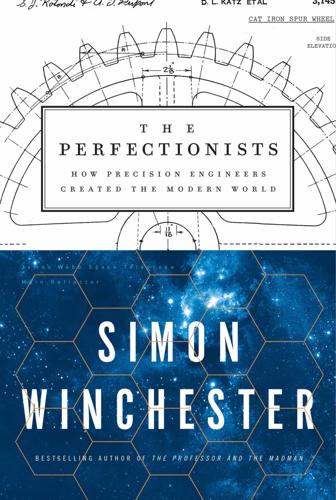
The Perfectionists: How Precision Engineers Created the Modern World
by
Simon Winchester
Published 7 May 2018
Air Force) Ops room of Second Space Operations Squadron ASML EUV photolithography machine (courtesy of ASML) Gordon Moore (courtesy of Intel Free Press) John Bardeen, William Shockley, and Walter Brattain First Bell Labs transistor (courtesy of Windell H. Oskay, www.evilmadscientist.com) Chart showing progress from Intel 4004 to Skylake (courtesy of Max Roser/Creative Commons BY-SA-2.0) Main mirror for James Webb Space Telescope Aerial view of LIGO Hanford Observatory LIGO test mass (courtesy of Caltech/MIT/LIGO Lab) Seiko Building with clock in Ginza (courtesy of Oleksiy Maksymenko Photography) Quartz watch (courtesy of Museumsfoto/Creative Commons BY-SA-3.0 de) Makers of Grand Seiko mechanical watch Bamboo creation from Met exhibit (courtesy of Metropolitan Museum of Art) Example of fine urushi work (courtesy of the Japan Folk-Craft Museum) Prologue The aim of science is not to open the door to infinite wisdom, but to set a limit to infinite error.
…
This is why everything that goes on within the ASML boxes does so in warehouse-size rooms that are thousands of times cleaner than the world beyond. There are well-known and internationally agreed standards of cleanliness for various manufacturing processes, and while one might suppose that the clean room at the Goddard Space Center in Maryland, where NASA engineers assembled the James Webb Space Telescope, was clean, it was in fact clean only up to a standard known as ISO number 7, which allows there to be 352,000 half-micron-size particles in every cubic meter of air. Rooms within the ASML facility in Holland are very much cleaner than that. They are clean to the far more brutally restrictive demands of ISO number 1, which permits only 10 particles of just one-tenth of a micron per cubic meter, and no particles of any size larger than that.
…
And with spaces that small, leakage of some properties of one transistor (whether electric, electronic, atomic, photonic, or quantum-related properties) into the field of another will surely soon be experienced. There will be, in short, a short circuit—maybe a sparkless and unspectacular short circuit, but a misfire nonetheless, with consequences for the efficiency and utility of the chip and of the computer or other device at the heart of which it lies. The main mirror for the James Webb Space Telescope. At more than twenty-four feet in diameter, it will, from its location a million miles from Earth, vastly increase our ability to peer into the very edge of the universe, and at the time the universe was forming. It is due to be launched in 2019. Thus is the tocsin being sounded. And yet, to a true chipaholic—or to a true believer that the world will be a better place if Moore’s law is rigidly observed and its predictions are followed to the letter—the mantra is a familiar one: “Just one more.
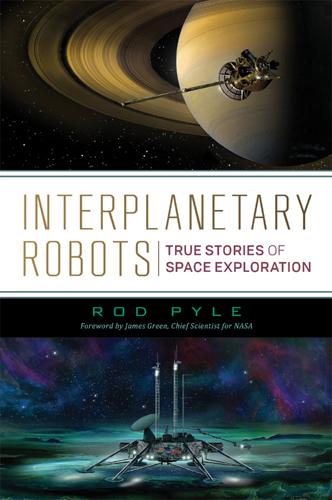
Interplanetary Robots
by
Rod Pyle
Various techniques, many deriving their functionality from the same principles that govern a sailboat, must be investigated in order to complete something more profound than a quick (very quick) flyby of the distant star system—stopping there and orbiting the local planets would be the most desirable outcome. But the scientists, engineers, and policymakers leading the high-profile team in charge of the program have not identified anything they consider to be a deal breaker, to use their own term. In a few years, NASA will launch the James Webb Space Telescope, the first optical instrument capable of limited imaging of worlds circling other stars. It will join the recently launched TESS, the Transiting Exoplanet Survey Satellite, in the identification and assessment of nearby candidate stars and worlds that surround them. The ever lengthening list of confirmed extrasolar planets will grow quickly, and some will likely show signs of possible biological activity in their atmospheres, such as the presence of methane or other gases that can be the result of metabolism.
…
This lab has the ability to seek biosignatures and organic compounds in the soil, so this is a true astrobiology mission. The drill also carries an infrared spectrometer in the bit, so it can examine the borehole as it drills. Original plans included NASA in the effort, but the ever-hungry James Webb Space Telescope budget consumed the funds previously allocated for this, and NASA was forced to pull out of the partnership. Landing sites are still under discussion, and a final selection will be made in 2019.2 Europa Clipper: After more than a decade of consideration, NASA's Europa Clipper mission finally got the nod to move ahead.
…
Russia is in discussions to partner on the mission with the Europeans, and their participation opens the possibility of using a Russian nuclear power supply instead of solar panels (which can be damaged by long exposure to Jupiter's radiation). The JUICE team is even looking at a possible lander add-on to descend to Ganymede and analyze the surface properties. Instrumentation includes cameras, spectrometers, and a surface-penetrating radar that would peer up to six miles below the ice surrounding these worlds.4 James Webb Space Telescope (JWST): While not a planetary probe per se, the JWST is a giant space telescope slated to launch in 2021. The sectional mirror will unfold after the JWST reaches its final position beyond the moon's orbit. JWST's mirror is 21.4 feet in diameter, and is truly a “big eye” when compared to the Hubble's eight-foot mirror; some truly amazing planetary science came from Hubble over the years, so the JWST should expand this reach dramatically.
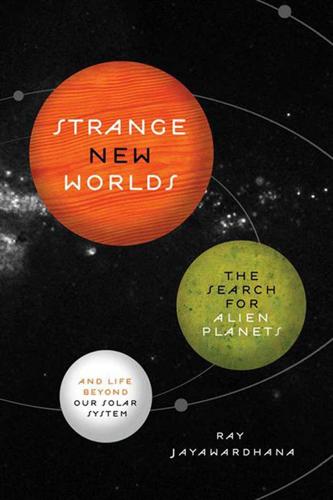
Strange New Worlds: The Search for Alien Planets and Life Beyond Our Solar System
by
Ray Jayawardhana
Published 3 Feb 2011
If funding permits, SOFIA may fy three or four nights a week starting in 2010 (it had the frst fight in May 2010, but regular operations start in 2011) for ten years or more, out of Edwards Air Force Base in California. It will build upon Spitzer’s legacy of characterizing exoplanets, while also studying a variety of other astronomical objects—from star-forming clouds in our cosmic backyard to newborn galaxies in the distant universe. The James Webb Space Telescope, a 6.5-meter successor to Hubble operating at near-and mid-infrared portions of the spectrum, is the next big thing on the horizon. Scheduled for launch in 2014, it should be able to sense the heat from hot Neptunes and possibly even big terrestrial planets. The next time you hear about “the storm of the century,” it may well be from astronomers rather than meteorologists, talking about violent weather raging on a steaming world circling a distant solar twin.
…
Invented by the French astronomer Bernard Lyot in 1930 to observe the Sun’s outer realms without having to wait for a solar eclipse, a coronagraph at its simplest is an occulting mask placed inside a telescope (or instrument) to block the bright, central part of the Sun. Modern designs use more sophisticated shapes for the mask, to improve the suppression of starlight while revealing extremely faint companions in the surrounding area. Co-ronagraphs will also be used for planet imaging with the James Webb Space Telescope, the 6.5-meter successor to Hubble, scheduled for launch in 2014. Even with these instruments, we will be limited to imaging giant planets, mostly around youngish stars in the solar neighborhood. Faint Blue Dots In principle, though, an advanced coronagraph could do much better.
…
Cataloguing and monitoring that many low-mass stars in search of an eclipsing Jupiter with a terrestrial sister is a daunting task. “While the odds of success are highly uncertain and the observations are technically challenging, at least we don’t need to wait a decade to start the search for extrasolar life,” Jura argued. Our prospects of detecting biosignatures will improve somewhat with the launch of NASA’s James Webb Space Telescope (JWST), scheduled for 2014 (see chapter 7). In principle, it will be capable of looking for imprints of various molecules—like oxygen, ozone, water, and carbon dioxide—in starlight that skims the atmosphere of a large terrestrial planet during transits, the same way that the Hubble and Spitzer space telescopes have already done with transiting Jupiters (see chapter 5).
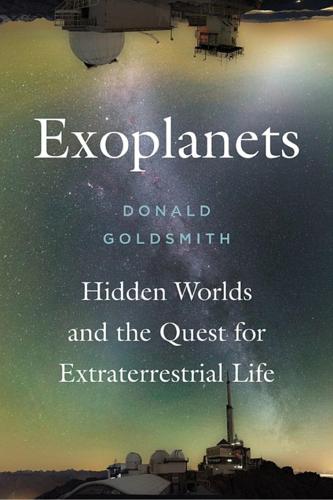
Exoplanets: Hidden Worlds and the Quest for Extraterrestrial Life
by
Donald Goldsmith
Published 9 Sep 2018
As has been true in the past, some of these avenues toward success interact with, as well as complement, one another. In the interest of simplification, however, let’s proceed along our now well-known pathways in an attempt to peer one or two decades into the future. Soon to Come: The James Webb Space Telescope Before the end of 2020, if all goes well, the James Webb Space Telescope (JWST), the successor to the amazingly successful Hubble Space Telescope, will finally achieve its orbit, and a year later it will have passed all tests and acquired full functionality. Once known as the Next Generation Space Telescope, the JWST received its new name in 1992 in honor of James Webb, who led NASA throughout most of the 1960s, as the manned space program Apollo passed from its earliest stages into final preparation for the launches that sent 12 men to the moon from 1969 through 1972.
…
For the time being, we may feel free to speculate that TRAPPIST-1d and its somewhat cooler neighbor TRAPPIST-1e possess pools, lakes, and seas, since they may have the proper temperatures to maintain liquid water on their surfaces. All that remains would be to check whether this hypothesis can receive verification from future investigations. Spectroscopic observations to be made by the new James Webb Space Telescope, once it becomes operational, may provide just such an opportunity (see Chapter 12). Orbital Resonances and Planetary Masses The orbital periods established for these planets exhibit what astronomers call orbital resonance, a phrase reminiscent of the harmonic resonance of sound waves.
…
Biosignatures How can we find evidence for life on planets many light years from Earth? The most promising approach lies in analyzing a planet’s atmosphere, searching for chemical compounds that arise from life and cannot otherwise be produced—according, of course, to our current and best understanding. This search will begin in earnest with the James Webb Space Telescope (see Chapter 13), which should provide astronomers with the first instrument capable of making a detailed spectral analysis of the atmospheres of Earthlike exoplanets. Soon after the new space telescope, usually called the JWST, begins to amass data, three great Earthbound telescopes of the future, each of them with mirrors 30 meters in diameter (also described in Chapter 13) should provide complementary spectroscopic observations.
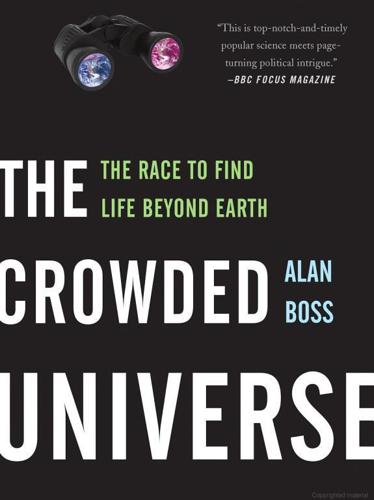
The Crowded Universe: The Search for Living Planets
by
Alan Boss
Published 3 Feb 2009
By 2004, Hubble was down to only three functioning gyroscopes. The expectation was that another gyroscope might fail by 2005, and yet another by 2007. At that point, Hubble would be as good as dead. Without SM4, the Hubble Era was nearly over. Hubble would then have no overlap with the Next Generation Space Telescope, which was now called the James Webb Space Telescope in honor of the early NASA administrator who insisted that NASA balance human space flight with a healthy program of scientific investigation. The Webb Telescope was now planned for launch in 2011, and its launch might slip further. The plan was that the Space Telescope Science Institute would continue to be supported in the interim before the launch of the Webb Telescope gave everybody something to do again.
…
May 11, 2005—Griffin sent Congress a revised budget plan for the current fiscal year (FY) that deferred the launch of both SIM and the TPFs to indefinite dates in the future and delayed the launch of the Mars Science Laboratory, intended to search for microbial life on Mars, from 2009 to 2011. These deferrals and delays were caused by Griffin’s need to find the money to pay for the SM4 Hubble repair mission and for cost overruns on the James Webb Space Telescope. Webb’s costs had risen by $1 billion, bringing its total cost to at least $3.5 billion. In perhaps the understatement of the decade, Griffin said, “NASA cannot afford everything on its plate” and maintained that he preferred to drop lower-priority items rather than spread the pain of an inadequate budget.
…
See HAT Huntress, Wesley Hutchison, Kay Bailey Hyades Hydrogen fluoride gas Hydrogen fusion IAU (International Astronomical Union) Executive Committee General Assembly (Prague, Czech Republic, 2006) General Assembly (Rio de Janeiro, Brazil, 2009) meeting (British Columbia, Canada, 1998) Planet Definition Committee and Pluto Transiting Planets Symposium (Cambridge, Massachusetts, 2008) Working Group on Extrasolar Planets Working Group on the Definition of a Planet Icarus Ice giant planets composition of See also Giant planets Ida, Shigeru Inaba, Satoshi Infrared Array Camera Infrared light , See also Light detection Infrared Spectrograph Institute for Astronomy (Edinburgh, Scotland) Institute of Astrophysics (Paris, France) Institute of Physics (Vienna Imperial University) Intelligent life Interferometers. See also individual interferometers International Astronomical Union. See IAU International Space Station James Webb Space Telescope. See Webb Space Telescope Jet Propulsion Lab (JPL; Caltech) and ExExP forum on exoplanets (Pasadena , 2008) Navigator Program and SIM and TPF Johnson Space Center JPL. See Jet Propulsion Laboratory Juno Jupiter and comets formation of Jupiter-mass planets Jupiter-Sun system Keck HIRES spectrometer (Mauna Kea, Hawaii) Keck Observatory (Mauna Kea, Hawaii) Keck Telescopes Kepler, Johannes (photo) Kepler Mission (NASA) and ATLO phase cost of and critical design review as Discovery Mission and ExExP launching of shake and bake tests on as Strategic Mission Kepler Science Center Kepler’s Third Law of planetary motion Kerr, Richard Kinney, Anne Konacki, Maciej Kornet, Kacper Kortenkamp, Stephen Kuiper, Gerard Kuiper Belt Kulkarni, Shri La Silla Observatory (Chile) Las Campanas Observatory (Chile) Laser comb technique Latham, David Laughlin, Greg Leger, Alain Lehrer, Jim Levy, Eugene Lewinsky, Monica Lick Observatory (Mount Hamilton, California) Light detection, from extrasolar planets Lin, Douglas Livesay, Leslie Lowell, Percival Lowell Observatory (Flagstaff, Arizona) M dwarf planets Pluto as See also Dwarf planets M dwarf stars and eccentric planets See also Dwarf stars Maran, Stephen Marburger, John Marcy, Geoffrey Marr, Jim Mars life on Mars Exploration Program Mars Exploration Rover (MER) Mars Rovers Mission Mars Sample Return Mission Mars Science Laboratory cost of Marsden, Brian Martian meteorite Mather, John Max Planck Institute for Astronomy Mayor, Michel McArthur, Barbara McKay, David Mendel, Johann Gregor MER.

Visual Thinking: The Hidden Gifts of People Who Think in Pictures, Patterns, and Abstractions
by
Temple Grandin, Ph.d.
Published 11 Oct 2022
National Transportation Safety Board. “Preliminary Report: Pipeline Over-pressure of a Columbia Gas of Massachusetts Low-pressure Natural Gas Distribution System [September 13, 2018].” October 11, 2018. Niler, E. “NASA’s James Webb Space Telescope Plagued by Delays, Rising Costs.” Wired, June 27, 2018. https://www.wired.com/story/delays-rising-costs-plague-nasas-james-webb-space-telescope/. Norman, C. “Chernobyl: Errors and Design Flaws.” Science 233, no. 4768 (September 5, 1986): 1029–31. “NRC Nears Completion of NuScale SMR Design Review.” World Nuclear News, August 27, 2020. Onyanga-Omara, J., and T.
…
It failed miserably, and dozens of bolts and fasteners were scattered. A good object visualizer in the shop could have addressed this problem. They would have visualized the effect of the shaking and designed fasteners that would have withstood liftoff. As of this writing, after months of calibration, the James Webb Space Telescope was sending back wondrous photos of galaxies from the farthest reaches of the universe. * * * When I was in college, researchers had to do many of the calculations they needed by hand. You may not recall the IBM punch card—they’re obsolete now—but it’s what everyone used to sort and process data back then.
…
Seattle Times, June 22, 2019. https://www.seattletimes.com/seattle-news/times-watchdog/the-inside-story-of-mcas-how-boeings-737-max-system-gained-power-and-lost-safeguards/. Gibson, E. J., and R. D. Walk. “The ‘Visual Cliff.’ ” Scientific American 202, no. 4 (1960): 64–71. Glantz, J., et al. “Jet’s Software Was Updated, Pilots Weren’t.” New York Times, February 3, 2019, 1, 18. “The Great, Late James Webb Space Telescope.” Economist, November 27, 2021, 76–78. Greene-Blose, J. M. “Deepwater Horizon: Lessons in Probabilities.” Paper presented at PMI Global Congress 2015—EMEA, London. Newton Square, PA: Project Management Institute. Gulati, R., C. Casto, and C. Krontiris. “How the Other Fukushima Plant Survived.”
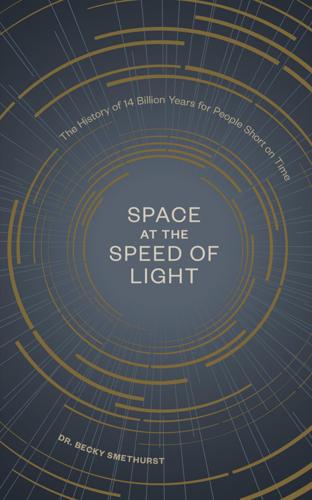
Space at the Speed of Light: The History of 14 Billion Years for People Short on Time
by
Becky Smethurst
Published 1 Jun 2020
The problem is that as objects in the universe get more distant, the signatures we use to trace supermassive black hole activity and star formation get redshifted so much that we can no longer see them with visible light. In other words, the Hubble Space Telescope can only see so far before there’s nothing left for it to see. It’s a good job that NASA and the European Space Agency (ESA) have a plan to launch another mission by 2021, called the James Webb Space Telescope, which will look at the sky in infrared light. This telescope will allow us to see the light from more distant objects as it gets redshifted from visible wavelengths down into the infrared. The stakes, and the expectations, for James Webb are high enough as it is, without the added excitement of finally solving the astrophysics equivalent of the age-old question: what came first—the chicken or the egg?
…
Index Alberta Aurora Chasers, 10.1, 10.2 aliens, probability of, 8.1 α-Centauri, 5.1 Andromeda galaxy, 1.1, 4.1 Apollo missions 1.1, 5.1 2.1, 5.1, 5.2 aurorae, 5.1, 10.1 big bang, 5.1, 9.1 black holes accretion rate of, 9.1 definition of, 3.1 event horizon of, 3.1 neutron stars and, 3.1 “seeing,” 3.1, 3.2 supermassive, at centers of galaxies, 1.1, 3.1, 9.1, 10.1 blue sky research, 10.1 Burnell, Jocelyn Bell, 3.1 Cepheid Variable stars, 2.1 Cosmic Redshift 7 (CR7), 9.1 Curie, Marie, 10.1 dark matter detecting, 4.1 evidence of, 4.1 form of, 4.1 halo, 4.1 ordinary matter vs., 4.1 properties of, 4.1 dark sky paradox, 7.1 Donovan, Eric, 10.1 Doppler shift, 4.1 Earth exoplanets like, 6.1, 6.2 magnetic field of, 5.1 -Moon system, 1.1 spin of, 1.1 tilted axis of, 1.1, 1.2 Eddington accretion limit, 9.1 Einstein, Albert, 3.1, 3.2, 4.1, 4.2, 4.3, 8.1 Einstein ring, 4.1 entropy, 1.1 European Space Agency (ESA), 9.1 Event Horizon Telescope, 3.1 exoplanets, 6.1, 8.1 Franklin, Benjamin, 10.3 galaxies destruction of, 1.1 formation of, 1.1, 9.1 number of, 8.1, 8.2 rotation speeds of stars in, 4.1 spectrum of, 2.1, 2.2 supermassive black holes at centers of, 1.1, 3.1, 9.1, 10.1 Galaxy Zoo, 10.1 general relativity, theory of, 3.1, 4.1 gravitational waves, 3.1, 4.1 gravity Einstein’s theory of, 3.1, 4.1 importance of, 1.1, 1.2 Newton’s law of, 1.1, 4.1 Haise, Fred, 5.1 Hanny’s Voorwerp, 10.1 Hawking, Stephen, 3.1 HI-SEAS experiment, 5.1 Hubble, Edwin, 2.1, 6.1 Hubble Space Telescope (HST), 8.1, 9.1, 9.2, 10.1 inflation, 9.1 International Space Station, 5.1 James Webb Space Telescope, 9.1 Juno probe, 5.1 Jupiter, 5.1, 5.2, 8.1 Kepler-438b, 6.1 knowledge, categories of, 10.1 Leavitt, Henrietta, 2.1 Lemaître, Georges, 2.1 LIGO detector, 3.1, 3.2 Lovell, Jim, 5.1 MACHOs (MAssive Compact Halo Objects), 4.1, 4.2 Mariner spacecraft, 5.1 Mars, 5.1, 5.2 Messier, Charles, 10.1 Messier 8.1, 3.1 Milky Way galaxy black hole at center of, 1.1, 3.1 destruction of, 1.1, 1.2 Sun’s location in, 8.1 Mir, 5.1 MOND (MOdified Newtonian Dynamics), 4.1 Moon formation of, 1.1, 1.2 missions to, 5.1, 5.2, 5.3 orbit of, 1.1 phases of, 1.1, 1.2 spin of, 1.1 NASA, 5.1, 5.2, 9.1, 10.1 Neptune, 5.1 neutron stars, 3.1, 9.1 Newton, Isaac, 1.1, 4.1 Northern Lights, 5.1, 10.1 Olbers, Heinrich, 7.1 Opportunity, 5.1, 5.2 Penrose, Roger, 3.1 Pluto, 6.1 Poe, Edgar Allan, 7.1, 7.2 quasar light ionization echoes, 10.1 Rubin, Vera, 4.1 Saturn, 5.1, 8.1 seasons, 1.1, 1.2 singularities, 3.1 solar eclipses, 1.1 Southern Lights, 5.1 spacetime, 3.1 Standard Model, 4.1 stars formation of, 5.1 number of, 8.1 rotation speeds of, in galaxies, 4.1 Steve, 10.1, 10.2 Sun age of, 8.1 end of, 1.1 formation of, 1.1 location of, in galaxy, 8.1 properties of, 8.1 Swigert, Jack, 5.1 universe age of, 6.1, 7.1 early, 9.1, 9.2 expansion of, 2.1, 4.1, 7.1, 9.1 possible futures for, 2.1, 2.2 Uranus, 5.1 van Arkel, Hanny, 10.1, 10.2 Venus, 5.1, 8.1 VIRGO detector, 3.1, 3.2 Voyager 1 and 2 spacecraft, 5.1 WIMPs (Weakly Interacting Massive Particles), 4.1 What’s next on your reading list?
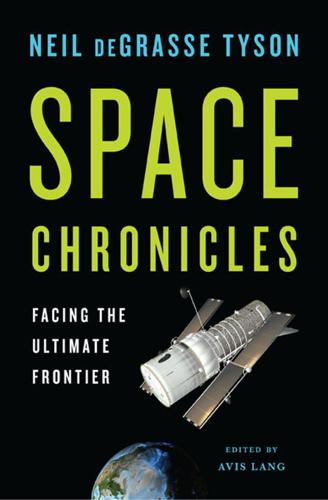
Space Chronicles: Facing the Ultimate Frontier
by
Neil Degrasse Tyson
and
Avis Lang
Published 27 Feb 2012
The European Space Agency’s Integral satellite studies gamma rays, the highest-energy form of light, which arise from exploding stars and other violent cosmic events; NASA’s Swift Gamma Ray Burst Explorer searches for the most distant gamma-ray outbursts in the universe. Meanwhile, the Hubble Space Telescope will continue to work until its larger successor, the James Webb Space Telescope, reaches orbit, peering farther than any previous telescope as it chronicles the formation of galaxies and the large-scale structures they trace. Enlightened by our surrogate eyes in this busy vacuum of space, we should occasionally remind ourselves that Earth’s continents display no national boundaries.
…
Akin to a modern version of a torch-wielding mob, they voiced their opposition in every medium available, from op-eds to petitions. Ultimately, Congress listened and reversed the decision. Democracy had a shining moment: Hubble would indeed be serviced one last time. Of course, nothing lasts forever—nothing except, perhaps, the universe itself. So Hubble eventually will die. But in the meantime, the James Webb Space Telescope beckons, designed to see deeper into the universe than Hubble ever could. When launched, funding permitting, it will allow us to plumb the depths of gas clouds in our own Milky Way galaxy in search of stellar nurseries, as well as to probe the earliest epochs of the universe in search of the formation of galaxies themselves.
…
The Wilkinson Microwave Anisotropy Probe (WMAP for short), which was launched in 2001, reached the Sun–Earth L2 in a couple of months and is still librating there, having busily taken data on the cosmic microwave background—the omnipresent signature of the Big Bang. And having set aside a mere 10 percent of its total fuel, the WMAP satellite nevertheless has enough fuel to hang around this point of unstable equilibrium for nearly a century, long beyond its useful life as a data-taking space probe. NASA’s next-generation space telescope, the James Webb Space Telescope (successor to the Hubble), is also being designed for the Sun–Earth L2 point. And there’s plenty of room for yet more satellites to come and librate, since the real estate of the Sun–Earth L2 occupies quadrillions of cubic miles. Another Lagrangian-loving NASA satellite, known as Genesis, librated around the Sun–Earth L1 point.
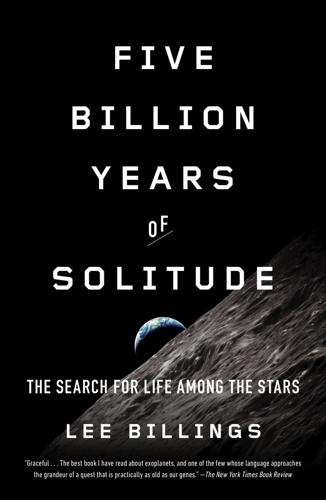
Five Billion Years of Solitude: The Search for Life Among the Stars
by
Lee Billings
Published 2 Oct 2013
After Hubble reached the end of its useful life sometime in the first or second decade of the twenty-first century, it would be de-orbited into the Pacific Ocean, and a new, even more revolutionary observatory would take its place. Hubble’s successor was announced in 1996 as the Next Generation Space Telescope before being renamed the James Webb Space Telescope (JWST) in 2002 in honor of the NASA administrator who had guided the agency in the glory days of Apollo. Its mission would be to fully unveil the universe’s very first galaxies, the objects that manifested only as tiny red blobs in Hubble’s deepest images. JWST would be only the beginning—the U.S. astronomy community rapidly made plans to pursue many additional big, ambitious space telescopes, like a hungry diner selecting not one but several gut-busting entrées from a menu.
…
“All this work is purely to make us ready for an eventual interpretation of unclear observations,” she parried, sipping her wine. “And some of this will start happening soon. First we’ll be able to look at some transiting super-Earths around nearby, quiet M-dwarfs, the ones with puffy, extended atmospheres that [the James Webb Space Telescope] and maybe even telescopes on the ground will be able to probe. But after that we won’t have infinite chances to find our Earth twin. Anything launched in our lifetimes will probably only be able to look at the nearest hundred stars or so, and that’s all we’ll have. So if we don’t have any Earth twins to survey in that space, how will we ever recognize any biosignature gases?
…
acid runoff, 173, 175 Alienopoly, 260 Allegheny Plateau, 124–28 Allen, Paul, 12 Allen Telescope Array (ATA), 12–14, 41, 42 Alpha Centauri, 36, 52, 73, 232, 234 search for planet near, 94–98 simulations of planetary assembly in, 96, 97 American Astronomical Society, 194 Americas, 21–22 anaerobes, 129, 140, 142, 143, 169 Anaximander, 78 Anderson, Eric, 258 Andromeda Galaxy, 31, 191, 238 Anglada-Escudé, Guillem, 64–69 anthracite coal, 125, 131, 134, 136, 137, 144, 160, 184 Anthropocene era, 135–37, 145, 146 anti-gravity devices, 100 Apollo program, 1, 50, 151, 187, 202, 212, 239 Archean Eon, 139–40, 141, 169, 171, 184, 200 Arecibo Observatory, 39–42 Ares V, 203 Aristarchus, 79–81, 86 Aristotle, 78–79, 82 Arthur, Janice, 121–23 Arthur, Mike, 121–24, 127–30, 136–38 Asimov, Isaac, 152 asteroids, 3, 19, 76, 110, 140, 154, 258 Earth struck by, 30 astrobiology, 15, 153, 169, 231 astronomy, 4, 33, 48, 111, 190 Copernican Principle (principle of mediocrity) in, 83, 89, 91 golden age of, 192 modern, beginning of, 82 see also cosmology Astrophysical Journal Letters, 67 Atchley, Dana, 15 Atlantis, 185–87 ATLAST (Advanced Technology Large-Aperture Space Telescope), 198, 203, 230 atomic weapons, 23–24 atoms, 43, 79–81, 248 Automated Planet Finder (APF), 61, 70, 114 Bahcall, John, 249, 251 Bains, William, 261 Barnard’s Star, 52 Baum, Frank, 11 Beichman, Charles, 221–22 Berner, Robert, 178 Big Bang, 89–91 biosignatures, 167–72, 261–62 black holes, 88–89, 191, 206 black shales, 123–26, 135, 137–38, 141 in Marcellus formation, 126–30, 137, 138, 141, 144, 160 Bode, Johann, 109 Bode’s law, 109–10 BoingBoing.net, 74 Bonfils, Xavier, 66–69 Bradbury, Ray, 98–99 Bryson, Bill, 144 Bush, George W., 196, 198, 215, 221–23 Butler, Paul, 55, 58–70, 96, 114 Caldeira, Ken, 181 California, 105–7, 112–13 gold rush in, 105–6, 111, 112–13 Calvin, Melvin, 15, 19–20, 25 Cambrian Period, 138–39, 143–45, 182 Cameron, James, 258 Campbell, Joseph, 261 Canada, 244–48 Canadian Shield, 246 Capella, 239 carbon, 123, 131, 132, 134, 135, 140, 141, 175, 179, 182 carbonate-silicate cycle, 175–81, 184 carbon cycle, organic, 175 carbon dioxide (CO2), 124, 132, 134–37, 140, 141, 157, 159–62, 168, 170, 172, 173, 175–82, 184 Carboniferous Period, 131, 132 Carina Nebula, 238 Carnegie Institution, 251 Carpenter, Scott, 100 Carter, Jimmy, 240 Cash, Webster, 219–20 Cerro Tololo Inter-American Observatory, 96 Challenger, 3, 188–89 Chandra X-Ray Observatory, 192, 209 Chaotian Eon, 139 Charbonneau, David, 228–30, 232 charged-coupled devices (CCDs), 51–53 China, 21–22 chlorofluorocarbons, 134, 142 chlorophyll, 141, 143 Christmas Tree Cluster, 238 Clinton, Bill, 196, 215 clouds, 161–62, 164, 206 coal, 125, 131, 134, 136, 137, 144, 160, 184 Columbia, 189, 196 comets, 2, 3, 19, 76–77, 140 Halley’s, 3 Compton Gamma Ray Observatory, 192, 209 computers, 43–44 Constellation program, 196, 198, 203, 204, 215, 221, 223 convergent evolution, 21 Cook, James, 85–86 Copernican Principle (principle of mediocrity), 83, 89, 91 Copernicus, Nicolaus, 81–83, 86, 87, 89, 91, 200 Cornell University, 39, 42 coronagraphic TPF, 217–22, 224, 231, 249 coronagraphs, 217 cosmology, 77–82 Copernican Principle (principle of mediocrity) in, 83, 89, 91 inflationary theory in, 89–92 modern, 86–87, 91 see also astronomy Cosmos, 240 Costanza, Robert, 74–75 Crab Nebula, 30 Crabtree, William, 84 Crutzen, Paul, 134–35 Cuban missile crisis, 23–24 cyanobacteria, 140–44, 175, 183 Daily Mail, 74 dark energy, 88, 90 dark matter, 206 Darwin, Charles, 200 Davidson, George, 113 deep time, 145–46 Democritus, 79, 80, 92, 238 Demory, Brice, 259 De Rerum Natura (On the Nature of Things) (Lucretius), 80–81 De Revolutionibus Orbium Coelestium (On the Revolutions of Heavenly Orbs) (Copernicus), 82 Devonian Period, 128, 130–32 Diamandis, Peter, 258 dinosaurs, 30, 136, 144 Discovery, 189 DNA, 40, 141, 143, 170 dolphins, 16, 20–21 Drake, Frank, 9–17, 27–45, 101, 167–68, 240 Arecibo transmission of, 39–41 orchids of, 37–38 Drake equation, 16–25, 28–29, 38–39, 41, 42, 183 longevity of technological civilizations (L term) in, 22–25, 38–39, 41, 42 Draper Laboratory, 256 Dyson, Freeman, 104 Dyson spheres, 104, 105 Earth, 109 asteroid strike on, 30 atmosphere of, 3, 132, 134–35, 139, 140, 144, 157–60, 168–69, 174–77, 206, 238 “Blue Marble” images of, 212, 239–41 carbonate-silicate cycle on, 175–81, 184 climate of, 123–24, 128, 132–37, 142, 144, 156–57, 160–62, 173–75, 184 in early cosmology, 77–82 energy consumption on, 103–4 extinctions on, 43, 135, 184 faint young Sun problem and, 173–75 formation of, 2, 7, 20, 139, 173 geologic time periods of, 128–45 glaciation on, 132–34, 142, 174, 176, 178, 179, 183 human population of, 43, 100, 134, 136 ice caps of, 128, 132–33, 135, 136, 184 Laughlin’s idea for moving orbit of, 76–77 Laughlin’s valuation of, 73–76 oxygen on, 139–44, 159, 171, 180–82, 200, 238 Snowball Earth events, 142, 174, 179 Sun’s distance from, 83, 86 tectonic plates of, 30, 105, 111, 128, 140, 144, 176, 229 union of organisms with geophysical systems on (Gaia hypothesis), 175, 176, 178, 183 water on, 3, 30, 158–61, 174, 177–80, 182 Earth, life on, 31, 154 diversification and explosion of, 138–39, 143, 144, 182 emergence of, 4, 7, 19–20, 238 end of, 7–8, 31–32, 75–77, 159, 180–83 essential facts of, 29–30 humanity’s ascent, 144–46 intelligent, 20–21, 182–83 jump from single-celled to multicellular, 28 redox reactions and, 168 Earth-like planets, 29, 32–34, 71–72, 99, 227–28 Earth-size or Earth-mass planets, 6, 53–54, 56, 200, 227, 251 ecology and economics, 74 economic growth, 102, 103 Eddington, Arthur, 35 Edison, Thomas, 106 Einstein, Albert, 35, 87 Elachi, Charles, 211–12, 214, 221 electricity, 103, 136 Emerson, Ralph Waldo, 254 Endeavour, 190 endosymbiosis, 143 energy, 103–4, 136–38 from fossil fuels, 103, 124–27, 137, 154, 160, 184 Engelder, Terry, 126 Epicurus, 80 Epsilon Eridani, 10–11 Eshleman, Von, 35 ethanol, 137 eukaryotes, 143, 144 European Southern Observatory (ESO), 60, 64, 66 European Space Agency, 222 evolution, 183 convergent, 21 of universe, 88–89 exoplanetology, 13, 14, 34, 51, 193 exoplanets, 5, 27–28, 87, 222–23, 263 51 Pegasi b, 50, 53, 54, 58–59 Alpha Centauri Bb, 98–99 biosignatures and, 167–72, 261–62 Blue Marble images of, 212–15 distinguishing between various compositions of, 251 Earth-like, 29, 32–34, 71–72, 99, 227–28 Earth-size or Earth-mass, 6, 53–54, 56, 200, 227, 251 formation of, 109 GJ 667Cc, 65–69, 72 Gliese 581c, 163 Gliese 581d, 163 Gliese 581g (Zarmina’s World), 63–64, 68, 69, 72, 163 Gliese 876b, 60 habitability of, 154–83 HD 85512b, 163–64 Jupiter-like, 13, 28, 50, 56, 59, 60, 108, 109, 226, 228, 248–49 Laughlin’s valuation of, 71–77 migration theory and, 108 Neptune-like, 56, 108–9, 251 “Next 40 Years” conference on, 225–35, 263 observation of stars of, 33 snow line idea and, 110 super-Earths, 228–29, 251, 262 transits of, 53 TrES-4, 228 exoplanet searches, 5–7, 13–14, 32–33, 69–70 and false-alarm discoveries, 52–53 press releases on progress in, 163–65 SETI and, see SETI spectroscopy in, see spectroscopy, spectrometers see also telescopes Ferguson, Chris, 185–86 financial markets, 111–12 Fischer, Debra, 59, 61, 62, 69, 96 Ford, Eric, 249–50 Ford, Henry, 125 fossil fuels, 103, 124–27, 137, 154, 160, 184 fracking (hydraulic fracturing), 126–27 Gaia hypothesis, 175, 176, 178, 183 galactic planetary census, 54 galaxies, 87, 88, 99, 238 Andromeda, 31, 191, 238 Hubble Telescope and, 191 Local Group of, 88 Milky Way, see Milky Way Galileo, 241–42 Galileo Galilei, 81–83, 210 Galliher, Scot, 257 Garrels, Robert, 178 gas, natural, 125–27, 137, 184 Gemini telescopes, 199–200, 203 General Dynamics Astronautics time capsule, 100–103 geologic time periods, 128–45 geology, 110–11, 123 glaciers, 132–34, 142, 174, 176, 178, 179, 183 Glenn, John, 100 Goldin, Dan, 194, 211, 215, 242 governments, Urey on, 102 gravitational lenses, 35–37 Great Observatories, 192, 197, 209 Greece, ancient, 77, 92, 238 Green Bank conference, 15–25, 27–28, 101, 167–68, 240 greenhouse gases, 124, 134, 137, 157, 160, 174, 175 carbon dioxide, see carbon dioxide methane, 140, 142, 168–71, 174, 200 Grunsfeld, John, 197–99, 225–26, 235 Guedes, Javiera, 96 Gund Institute for Ecological Economics, 74–75 “Habitable Zones around Main Sequence Stars” (Kasting), 155–56, 159 Hadean Eon, 139–40, 156 Halley, Edmond, 84 Halley’s comet, 3 Hart, Michael, 174, 178 Hays, Paul, 176–79 heliocentrism, 79–82 Hiroshima, 23 Holmes, Dyer Brainerd, 100–101 Holocene Epoch, 133–35, 145 Horrocks, Jeremiah, 84 Howard, Andrew, 62 How to Find a Habitable Planet (Kasting), 167 Hu, Renyu, 259 Huang, Su-Shu, 15, 19 Hubble, Edwin, 86–87 Hubble Space Telescope, 189–93, 195, 197–99, 205–7, 209, 218–19, 226 human genome project, 234 hydraulic fracturing (fracking), 126–27 hydrogen, 159, 170–72 Icarus, 155 ice ages, 132, 133, 142–43 Industrial Revolution, 22, 134 inflationary theory, 89–92 Ingersoll, Andrew, 159 intelligence, 20–21, 23, 32, 182–83 interferometry, 213–14, 216, 231 International Space Station (ISS), 187, 189, 197, 202, 207–8, 210 interstellar travel, 44–45, 100–101 iron, 141 James Webb Space Telescope (JWST), 193–99, 202–4, 209, 215, 216, 218, 220, 225, 262 Jensen-Clem, Becky, 259 Jet Propulsion Laboratory (JPL), 211–12, 216, 219, 221–25, 231 Johnson, Lyndon B., 101 Journal of Geophysical Research, 178 Jupiter, 76, 109, 191, 239 Galileo’s study of, 81 Kepler’s laws and, 83 moons of, 28, 110 Jupiter-like planets, 13, 28, 50, 56, 59, 60, 108, 109, 226, 228, 248–49 Kasdin, Jeremy, 219–20 Kasting, Jerry, 150–52 Kasting, Jim, 150–67, 169–84 children of, 153 Kasting, Sandy, 150 Kasting, Sharon, 153 Keck Observatory, 59, 60, 62, 66, 118 Kennedy, John F., 224 Kennedy Space Center, 185 Kepler, Johannes, 82, 83 planetary motion laws of, 82–84 Kepler field stars, 41 Kepler Space Telescope, 13–14, 53–54, 56, 62, 71–73, 98, 108–9, 166, 201, 225, 229–30, 263 Kirschvink, Joseph, 142 Knapp, Mary, 259 Korolev, Sergei, 186 Kuchner, Marc, 217–18 Kuiper Belt, 76 Large Magellanic Cloud, 238 Lasaga, Antonio, 178 Late Heavy Bombardment, 3, 140 Laughlin, Greg, 5–6, 48–50, 53–57, 69–70, 93–100, 107–12, 114–15, 117–20 Alpha Centauri planet search and, 94–98 idea to move Earth, 76–77 magnetic toy of, 93–94 SETI as viewed by, 99 valuation equation of, 71–77 laws of nature, 155–56 Lederberg, Joshua, 15, 16, 167–68 Le Gentil, Guillaume, 85, 117 Leinbach, Mike, 185–86 Lick, James, 112–14 Lick Observatory, 58, 61, 62, 70, 113–19 life, 32 on Earth, see Earth, life on intelligent, 23, 32 single-celled, 20 technological, see technological civilizations light: photons of, 72, 89, 115–16, 156, 191, 193–94, 201, 202, 213, 216, 237–38 polarization of, 115–16 waves of, 213–14, 216 Lilly, John, 15–16, 20–21 Local Group, 88 Lovelock, James, 168, 170, 174–76, 178, 181–83 Lucretius, 80–81 Lyot, Bernard, 217 Madwoman of Chaillot, The, 36 Manhattan Project, 23 Marcellus Center for Outreach and Research, 127, 149 Marcellus formation, 126–30, 137, 138, 141, 144, 160 Marconi, Guglielmo, 48 Marconi Conference Center, 48–50, 53–57 Marcy, Geoff, 57–63, 69, 70, 114, 194, 230–32, 235 Margulis, Lynn, 175 Mars, 19, 50, 87, 100, 107, 109, 155, 167, 179, 191, 192, 239 Kepler’s study of, 82, 83 missions to, 187, 188, 196, 207, 221 water on, 28, 179 Marshall, James, 105–6, 112 Martian Chronicles, The (Bradbury), 98–99 Massachusetts Institute of Technology (MIT), 251–52, 259 ExoplanetSat project, 256–57 “Next 40 Years of Exoplanets” conference at, 225–35, 263 Mayor, Michel, 58 McPhee, John, 145 mEarth Project, 228–29 mediocrity, principle of (Copernican Principle), 83, 89, 91 Mercury, 82, 109, 239 meteorites, 20 methane, 140, 142, 168–71, 174, 200 methanogens, 140, 142, 169 microbes, 28 Miletus, 77 Milky Way, 16–17, 25, 31, 39, 41, 79, 86–87, 191, 237, 238 Sun’s orbit in, 95 Miller, George P., 101 Miller, Stanley, 19 Miller Institute for Basic Research in Science, 48, 74 mitochondria, 143 Moon, 3, 76, 100, 229, 242 in early cosmology, 78, 83 formation of, 30, 139 Moon, missions to, 188, 196, 221, 224 Apollo, 1, 50, 151, 187, 202, 212, 239 Morrison, Philip, 15, 18–19, 21, 23–24 Mosely, T.

Accessory to War: The Unspoken Alliance Between Astrophysics and the Military
by
Neil Degrasse Tyson
and
Avis Lang
Published 10 Sep 2018
Although Northrop Grumman characterizes itself as a “leading global security company” and foregrounds its military work—“We provide products, systems and solutions in autonomous systems; cyber; command, control, communications and computers, intelligence, surveillance, and reconnaissance (C4ISR); strike; and logistics and modernization”—it is also the prime contractor for NASA’s James Webb Space Telescope, a state-of-the-art, state-of-the-science infrared observatory designed to orbit the Sun a million miles from Earth as, alongside other goals, it tracks the birth of galaxies in the early universe. Conceived in 1996 as the follow-on to Hubble, the Webb telescope, named for the administrator of NASA during much of the Apollo era, represents a total cost of about $9 billion—about $375 million per year when spread from birth to launch.
…
Because the NRO had begun to use even better ones. Unfortunately for the future of astrophysics, the White House’s FY2019 budget request completely eliminates funding for WFIRST, on the grounds that “developing another large space telescope immediately after completing the $8.8-billion James Webb Space Telescope is not a priority for the administration.”39 Let’s put that in context. For many years, NASA’s budget—covering all ten NASA centers, the astronaut program, the International Space Station, and all space probes and spaceborne telescopes, including Hubble—has been less than one-half of one percent of the federal budget.
…
Hubble was adored not only by scientists but by civilians, who in 2004 took ownership of it. When NASA proposed to cancel the telescope’s final servicing mission, the outcry from the general public was greater than that from the scientists. Congress relented, and the mission was reinstated. Hubble’s successor, the infrared-tuned James Webb Space Telescope, has, as far as we know, no military doppelgängers—yet. 7 MAKING WAR, SEEKING PEACE Space is a physics battleground. Gigantic magnetic fields loop through the frigid emptiness. Bursts of plasma erupt from the surfaces of suns. Black holes flay and swallow every object that wanders near.

On the Future: Prospects for Humanity
by
Martin J. Rees
Published 14 Oct 2018
But it makes sense to start with what we know (the ‘searching under the streetlight’ strategy) and to deploy all available techniques to discover whether any Earthlike exoplanet atmospheres display evidence for a biosphere. Clues should come, in the next decade or two, from the deep space James Webb Space Telescope and from the E-ELT and similar giant telescopes on the ground that will come on line in the 2020s. Even these next-generation telescopes will have a hard job separating out the spectrum of the planet’s atmosphere from the spectrum of the brighter central star. But, looking beyond midcentury, one can imagine an array of vast space telescopes, each with gossamer-thin kilometre-scale mirrors, being assembled in deep space by robotic fabricators.
…
See also inorganic intelligences Intergovernmental Panel on Climate Change (IPCC), 39, 40, 58 International Atomic Energy Agency, 218 international institutions, 10, 32, 218–19 International Space Station, 140, 146 international tensions, 100 International Thermonuclear Experimental Reactor (ITER), 54 internet: leveling global education and health, 83–84, 220–21; national and religious divisions on, 100; security on, 220. See also information technology (IT); social media internet of things, 104 interstellar travel, 8, 79, 154 invasive species, 74 in vitro fertilisation (IVF), 67, 68 Iranian nuclear weapons programme, 20 iris recognition, 84–85 James Webb Space Telescope, 137 jobs: declining wages and security, 91; disrupted by technology, 5; in personal services, 96–97; resurgence of arts and crafts, 98; shortened working week, 97–98; taken over by machines, 91–94 Juncker, Jean-Claude, 28 Kardashev, Nikolai, 156 Kasparov, Garry, 86, 87–88 Keeling, Charles, 38 Keeling, Ralph, 38 Kennedy, John F., 17 Kepler, Johannes, 131 Kepler project, 131–32 Khrushchev, Nikita, 17 kidneys sold for transplant, 71 killer robots, 101–2 The Knowledge: How to Rebuild Our World from Scratch (Dartnell), 217 Kolmogorov, Andrey, 172 Kolmogorov complexity, 172, 174, 193 Kuhn, Thomas, 205 Kurzweil, Ray, 81, 108 Large Hadron Collider, 206–7 Lee Sedol, 88 Lehrer, Tom, 17 Leonov, Alexey, 138 life: Earth as only known home of, 121; habitable planets and, 125, 126–27, 133, 135–36; origin of, 128–29, 135–36; universe fine-tuned for, 186, 197–98.

How Big Things Get Done: The Surprising Factors Behind Every Successful Project, From Home Renovations to Space Exploration
by
Bent Flyvbjerg
and
Dan Gardner
Published 16 Feb 2023
Against that background, it is interesting to note that the project management literature almost completely ignores systematic study of the fat-tailedness of project risk. What do fat-tailed outcomes look like? Boston’s “Big Dig”—replacing an elevated highway with a tunnel, with construction started in 1991—put the city through the wringer for sixteen years and cost more than triple what it was supposed to. NASA’s James Webb Space Telescope, which is now almost a million miles from Earth, was forecast to take twelve years but required nineteen to complete, while its final cost of $8.8 billion was an astronomical—forgive me—450 percent over budget. Canada’s firearms registry, an IT project, went 590 percent over budget. And then there is Scotland’s Parliament Building.
…
Tesla would seem to have nothing to do with SpaceX, a Musk creation that is revolutionizing space transport and services. But the use of replicability to shoot up the learning curve, accelerate delivery, and improve performance is woven into the company’s planning and delivery model.20 Space has long been dominated by big, complex one-off projects, and priced accordingly, with NASA’s James Webb Space Telescope—$8.8 billion, 450 percent over budget—just the latest example. But there are promising signs that the lessons of modularity are taking hold. To make satellites, a company called Planet (formerly Planet Labs, Inc.) uses commercial, off-the-shelf electronics, like those mass produced for cell phones and drones, made into 10 × 10 × 10 cm (4 × 4 × 4 inch) modules as cheaply and easily as possible.
…
Skamris, ref1 Holmes, Elizabeth, ref1 home and kitchen renovations, ref1, ref2, ref3, ref4, ref5, ref6, ref7, ref8, ref9, ref10 honest numbers, ref1 Hong Kong, ref1, ref2, ref3, ref4, ref5 Hoover, Herbert, ref1, ref2 Hoover Dam, ref1, ref2, ref3 Hopper, Dennis, ref1 Hornsea Project, United Kingdom, ref1 Hughes, Robert, ref1 hurricanes, ref1 hydroelectricity, ref1 ice melt, ref1 Ickes, Harold, ref1 ignorance, ref1 IKEA, ref1 illusion of explanatory depth, ref1 inchstone approach, ref1 Incredibles, The (movie), ref1 Infinite Jest (Wallace), ref1 information technology (IT) projects, ref1, ref2, ref3, ref4, ref5, ref6, ref7, ref8, ref9, ref10, ref11, ref12, ref13, ref14, ref15 (see also specific projects) Inside Out (movie), ref1, ref2 inside view (detail), ref1, ref2, ref3 Instagram, ref1 International Energy Agency, ref1, ref2 International Olympic Committee (IOC), ref1 International Renewable Energy Agency, ref1 Internet, ref1 intuitive judgments, ref1, ref2, ref3, ref4, ref5 iPod, ref1 Ireland, ref1 Iron Law of Megaprojects, ref1, ref2 iterations (see planning) Ive, Jony, ref1 James Webb Space Telescope, ref1, ref2 Japan, ref1, ref2, ref3, ref4, ref5, ref6, ref7 Jaws (movie), ref1, ref2 Jay-Z, ref1 Jobs, Steve, ref1, ref2, ref3, ref4, ref5 Johnson, Lyndon B., ref1 Jørgensen, Hans Lauritz, ref1, ref2 Judaism, ref1 Justice, US Department of, ref1 Kahneman, Daniel, ref1, ref2, ref3, ref4, ref5, ref6, ref7, ref8, ref9 Kazan, Elia, ref1, ref2 Kennedy, John F., ref1 King Kong, ref1 Kissinger, Henry, ref1 Klein, Gary, ref1, ref2 Kmart, ref1 Kramer, Eddie, ref1, ref2, ref3 kurtosis, ref1 LaGuardia Airport, New York, ref1 Lamb, William, ref1, ref2 large numbers, law of, ref1 Larsen, Henning, ref1 Lasko, Jim, ref1, ref2 Last Movie, The (movie), ref1 Lawrence of Arabia (movie), ref1 lean startup model, ref1 Lean Startup, The (Ries), ref1, ref2 Led Zeppelin, ref1 Lego, ref1, ref2, ref3, ref4, ref5, ref6, ref7 Lennon, John, ref1 Levi Strauss, ref1 Levinson, Marc, ref1 Levy, Steven, ref1 lightbulbs, ref1, ref2 Lincoln, Abraham, ref1, ref2 Lincoln Center, New York City, ref1 lock-in, ref1, ref2, ref3 London, Olympic Games in, ref1 Los Angeles, California, ref1, ref2, ref3, ref4 Lötschberg Base Tunnel, Switzerland, ref1 Machiavelli factor, ref1 Madrid Metro, ref1, ref2, ref3 Maersk, ref1 Mandelbrot, Benoit, ref1, ref2 Marriott hotel, New York City, ref1 Mass Transit Railway (MTR), Hong Kong, ref1, ref2, ref3, ref4, ref5 masterbuilders, ref1 maximum virtual product model, ref1, ref2 McAllister, Ian, ref1 McKinsey & Company, ref1 McLean, Malcolm, ref1 Mead, Margaret, ref1 mean, regression to, ref1 means and ends, ref1, ref2 megaprojects, ref1, ref2, ref3 adjustments and, ref1, ref2, ref3, ref4 airports, ref1, ref2, ref3, ref4, ref5, ref6, ref7, ref8 anchoring and, ref1, ref2, ref3, ref4, ref5, ref6, ref7, ref8 budgets and cost overruns, ref1, ref2, ref3, ref4, ref5, ref6, ref7, ref8, ref9, ref10, ref11, ref12, ref13, ref14, ref15, ref16, ref17, ref18, ref19, ref20, ref21, ref22, ref23, ref24, ref25, ref26, ref27, ref28, ref29, ref30, ref31, ref32, ref33, ref34, ref35, ref36, ref37, ref38, ref39, ref40, ref41, ref42, ref43 commitment, escalation of, ref1, ref2 ending world hunger, as a megaproject, ref1, ref2 estimates and, ref1, ref2, ref3, ref4, ref5, ref6, ref7, ref8, ref9 experience and (see experience) fat-tailed distribution and, ref1, ref2, ref3, ref4, ref5, ref6, ref7, ref8, ref9 forecasting and, ref1, ref2, ref3, ref4, ref5, ref6, ref7, ref8, ref9 heuristics for better leadership, ref1 home and kitchen renovations, ref1, ref2, ref3, ref4, ref5, ref6, ref7, ref8, ref9, ref10 information technology (IT) projects, ref1, ref2, ref3, ref4, ref5, ref6, ref7, ref8, ref9, ref10, ref11, ref12, ref13, ref14, ref15 inside view (detail) and, ref1, ref2, ref3 Lego and, ref1, ref2, ref3, ref4, ref5, ref6, ref7 modularity and, ref1, ref2, ref3, ref4, ref5, ref6, ref7 movie production, ref1, ref2, ref3, ref4, ref5, ref6 normal distribution and, ref1, ref2, ref3, ref4 outside view (accuracy) and, ref1, ref2, ref3 planning and, ref1, ref2, ref3, ref4, ref5, ref6, ref7, ref8, ref9, ref10, ref11, ref12, ref13, ref14, ref15, ref16 rail projects, ref1, ref2, ref3, ref4, ref5, ref6, ref7, ref8, ref9, ref10, ref11, ref12, ref13, ref14, ref15, ref16, ref17, ref18, ref19, ref20 reference-class forecasting (RCF) and, ref1, ref2, ref3, ref4, ref5, ref6, ref7 right to left, thinking from, ref1, ref2, ref3, ref4, ref5, ref6 risk mitigation and, ref1, ref2, ref3, ref4, ref5, ref6, ref7 schedules and, ref1, ref2, ref3, ref4, ref5, ref6, ref7, ref8, ref9, ref10, ref11, ref12, ref13, ref14, ref15, ref16, ref17, ref18, ref19, ref20, ref21, ref22, ref23, ref24, ref25, ref26, ref27, ref28, ref29 teams and, ref1, ref2, ref3, ref4, ref5, ref6 think slow, act fast and, ref1, ref2, ref3, ref4, ref5, ref6, ref7, ref8, ref9, ref10, ref11, ref12, ref13 tunnels, ref1, ref2, ref3, ref4, ref5, ref6, ref7, ref8, ref9, ref10, ref11 uniqueness bias and, ref1, ref2, ref3, ref4, ref5, ref6, ref7, ref8 Mexico City, ref1 Microsoft, ref1 milestones, ref1, ref2 Miller, Diane Disney, ref1 minimum viable product model, ref1, ref2 mining, ref1, ref2, ref3 models, ref1 models and simulation, ref1, ref2, ref3, ref4, ref5 modularity, ref1, ref2, ref3, ref4, ref5, ref6, ref7 Møller, Arnold Maersk Mc-Kinney, ref1 Monju nuclear power plant, Japan, ref1, ref2, ref3, ref4 Montreal Gazette, ref1 Montreal Olympic Games (1976), ref1, ref2, ref3, ref4 Moses, Robert, ref1, ref2 movie production, ref1, ref2, ref3, ref4, ref5, ref6 Museum of Modern Art, New York City, ref1 Musk, Elon, ref1 NASA (National Aeronautics and Space Administration), ref1, ref2, ref3, ref4 National Architectural Association, ref1 National Health Service, United Kingdom, ref1 National Museum of Qatar, ref1 naturalistic decision making (NDM), ref1 negative heuristics, ref1 negative learning, ref1 Nepal school project, ref1, ref2, ref3, ref4, ref5, ref6, ref7 Netherlands, ref1, ref2 New York Public Library, ref1, ref2 New York Review of Books, The, ref1 New York Times, The, ref1, ref2, ref3 New Yorker, The, ref1 Newsday, ref1 Newsom, Gavin, ref1 Newton, Isaac, ref1 NIMBY (not in my back yard), ref1 No Time to Die (movie), ref1 Nobel Prize in Economic Sciences, ref1 normal distribution (Gaussian), ref1, ref2, ref3, ref4 Norway, ref1, ref2 Nouvel, Jean, ref1 nuclear power, ref1, ref2, ref3, ref4, ref5, ref6, ref7, ref8, ref9, ref10, ref11, ref12, ref13 Nuclear Regulation Authority, Japan, ref1 Obamacare, ref1 offshore wind farms, ref1, ref2 oil and gas projects, ref1, ref2, ref3 old project data, ref1 Olympic Fish, Barcelona, ref1 Olympic Games, ref1, ref2, ref3, ref4, ref5, ref6, ref7, ref8, ref9, ref10, ref11, ref12 one-building architect, ref1, ref2 one of those, ref1, ref2, ref3, ref4, ref5 OPEC (Organization of Petroleum Exporting Countries), ref1 opportunity costs, ref1 optimism, ref1, ref2, ref3, ref4, ref5, ref6 Organisation for Economic Cooperation and Development (OECD), ref1 organization of the artist, ref1 Ørsted, Hans Christian, ref1 Ørsted (DONG Energy), Denmark, ref1, ref2 outside view (accuracy), ref1, ref2, ref3 overconfidence, ref1 overpass collapse, ref1 Paralympic Games, ref1 Parliament Building, Scotland, ref1 past projects, ref1 Paz del Río steel mill, Colombia, ref1 Pearl River Delta Economic Zone, ref1 PensionDanmark, ref1 Pentagon, ref1, ref2, ref3 Pentagon, The: A History (Vogel), ref1, ref2 Perrow, Charles, ref1 phronesis, ref1, ref2, ref3, ref4, ref5, ref6, ref7 Piano, Renzo, ref1 pioneer companies, ref1 pipelines, ref1, ref2 Pixar Animation Studios, ref1 Pixar planning, ref1, ref2, ref3, ref4, ref5, ref6, ref7, ref8, ref9 Planet (Planet Labs, Inc.), ref1 Planet Dove satellite, ref1 planning, ref1, ref2, ref3, ref4, ref5, ref6, ref7, ref8, ref9, ref10, ref11, ref12, ref13, ref14, ref15, ref16, ref17, ref18 planning fallacy, ref1, ref2 planning fallacy writ large, ref1 Polanyi, Michael, ref1, ref2 politics, ref1, ref2, ref3, ref4, ref5, ref6 positive heuristics, ref1, ref2 positive learning curve, ref1, ref2 postpandemic investment, ref1 Potomac River, ref1, ref2 Poulsen, Henrik, ref1 power bias, ref1, ref2 Power Broker, The: Robert Moses and the Fall of New York (Caro), ref1 Power Mac G4 Cube computer, ref1 PR/FAQ (press release/frequently asked questions), ref1 presidential election of 1928, ref1 “Principle of the Hiding Hand, The” (Hirschman), ref1, ref2 Pritzker Architecture Prize, ref1 probability theory, ref1 Project Apollo, ref1 prospect theory, ref1 providential ignorance, ref1 psychological safety, ref1, ref2 psychology, ref1, ref2, ref3, ref4, ref5, ref6, ref7, ref8, ref9, ref10, ref11, ref12 Pulitzer Prize, ref1 Quartermaster Depot site, ref1, ref2 R.J.
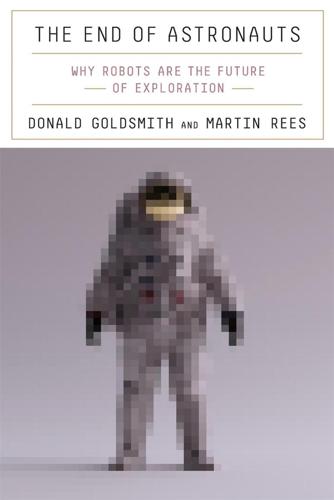
The End of Astronauts: Why Robots Are the Future of Exploration
by
Donald Goldsmith
and
Martin Rees
Published 18 Apr 2022
Because ESA typically ranks as NASA’s junior partner in funding, and because United States residents typically think almost entirely of NASA when they think of space, ESA’s contribution often receives little attention, even though projects such as the Hubble Space Telescope, the Infrared Space Telescope, and the soon-to-be-launched James Webb Space Telescope have relied on ESA throughout their history. Europe has contributed about 8 percent of the operational costs of the International Space Station, including the Columbus laboratory, the Cupola observatory, the Tranquility and Harmony modules, and the computers that collect data and provide navigation, communications, and operations capability for the Russian segment of the ISS.12 ESA’s five Automated Transfer Vehicles (ATVs) were massive and versatile supply ferries that provided the ISS with supplies and boosted its orbit for increased stability.
…
February 10, 2021 China’s Tianwen-1 spacecraft enters orbit around Mars and prepares to send a rover to the Martian surface. February 18, 2021 NASA’s Perseverance rover lands on Mars. April 19, 2021 The Ingenuity helicopter makes the first aerial flight on another planet. December 2021 NASA’s James Webb Space Telescope scheduled for launch from French Guiana. Notes Introduction 1. David Shayler and David Harland, The Hubble Space Telescope: From Concept to Success (New York: Springer Praxis Books, 2016) and Enhancing Hubble’s Vision: Service Missions That Expanded Our View of the Universe (New York: Springer Praxis Books, 2016). 2.

The Milky Way: An Autobiography of Our Galaxy
by
Moiya McTier
Published 14 Aug 2022
Some of the star’s photons are blocked and absorbed by molecules in the atmosphere, so your astronomers see a gap in the spectrum at those photons’ corresponding wavelengths of light. Thus far, both methods have worked only for planets with thick atmospheres like Jupiter, but human astronomers are confident that the upcoming James Webb Space Telescope (JWST) will change that. The telescope was previously called the Next Generation Space Telescope, and there was a push by some astronomers for the name to be changed again so as not to memorialize a man who discriminated against and persecuted his colleagues simply for daring to love another human with the same-shaped fleshy bits.5 Sounds like a reasonable request to me; that kind of silly, small-minded human thinking shouldn’t be celebrated.
…
A popular one was published by the Swedish International Academy of Astronautics in 1989: “Declaration of Principles Concerning Activities Following the Detection of Extraterrestrial Intelligence,” International Academy of Astronautics, 1989, https://iaaspace.org/wp-content/uploads/iaa/Scientific%20Activity/setideclaration.pdf. SETI and NASA have both drafted their own protocols influenced by the IAA’s. 5NASA refused to change the name of the James Webb Space Telescope, even after more than one thousand astronomers petitioned to change the name. It should be noted that the name wasn’t chosen through a typical formal process, and it is not uncommon for telescopes’ names to change (e.g., WFIRST changing to the Nancy Grace Roman Space Telescope, or LSST changing to the Vera C.

Carbon: The Book of Life
by
Paul Hawken
Published 17 Mar 2025
He believed in a steady-state model where an expanding universe constantly created new stars and galaxies, which was in accord with his atheism. The steady-state theory of the universe was eventually tossed out. The creation of the universe was traced back to a single point in time, a singularity occurring approximately 13.8 billion years ago. In 2023, images from the James Webb Space Telescope, peering back 13.5 billion years, revealed fully formed galaxies that may not have been created within that timeline. From the point of view of Hindu or Buddhist cosmologies, the Big Bang and steady-state theories are both correct. Compared to Western cosmologies, ancient teachings propose unimaginable time scales wherein the universe expands and contracts repeatedly during millions of maha kalpas.
…
See consciousness interglacials, 146 International Monetary Fund, 4 InventWood, 83–84 IQ, 80 iron, 21 Isabella (Queen), 47 J Jackson, Jimmie Lee, 189 James Webb Space Telescope, 22 Jones, Christine, 167 jungles, 153 junk food, 51–52, 162 K kale, 55–56 Kaplan, Sarah, 145 Kiers, Toby, 103–15 Kimmerer, Robin Wall, 4, 175, 176, 181, 192 King, Martin Luther, Jr., 189 Krause, Bernie, 42–45 Krefeld Entomological Society, 137, 140 Kropotkin, Peter, 7 Kroto, Harold, 74–75 L lactose, 55 Landa, Diego de, 48 language, 116–28 of climate change, 126 English, 117–18, 121, 123, 126 of fungi, 115 of Indigenous peoples, 118–27, 191 of insects, 187 of plants, 94–99, 117 of Yámana, 119–21, 122 leafcutter ants, 160, 179 Least Heat-Moon, William, 127 LED lights, 40 Leeson, Annie, 174 Leeuwenhock, Antonie Philips van, 32, 175 Leo, Bey Fen, 80 leptons, 14 life cells and, 30–45 definitions of, 34–35 Gaia hypothesis and, 38–40 lack of definition for, 31 on Mars, 36–37 NASA’s search for, 33–36 life expectancy, 63 The Light Eaters (Schlanger), 101 light pollution, 40–42 Lincoln, Abraham, 167–68 Lincoln Meadow, 43 Linnaeus, Carl, 187 “The Little Things That Run the World” (Wilson), 136 Liu, John, 167 Lopez, Barry, 181, 192–93 Lovejoy, Tom, 149–50, 152–53, 154 Lovelock, James, 35–39 Lowell, Percival, 36 Lyell, Charles, 158 Lyons, Oren, 118, 191–92 M Mabey, Richard, 90 Magellan, Ferdinand, 119–20 magnesium-24, 25 maha kalpa, 22–23 Maidu, 125–26 maize, 48 Mancuso, Stephen, 92–93, 102 Mao Zedong, 139–40 March to Montgomery, 188 Mars carbon on, 7 life on, 36–37 The Martian Chronicles (Bradbury), 36 Massy, Charlie, 167 Massy, Tanya, 167 Masters, Nicole, 157, 161–62, 167, 168 masting, 93–94 Maya, 48, 65–66 Mahler, Gustav, 27–28 McCoy, Peter, 103, 156 McDonald’s, 63 medicinal plants, 68–69 megaforests, 149–54 melatonin, 18 Melosh, Jay, 144 mesons, 14 methane, on Mars, 37 Mexico, Coca-Cola in, 66 Meyer, Stephen, 27 microscopes, 32 Mi’kmaq, 123 Milankovitch, Milutin/Milankovitch cycle, 145–46 mitochondria, 12, 15 food and, 56–57 nanotubes and, 77 Miwok, 69–70 modernity, 5 vanity of, 8 Mohawk, John, 67–68 molecules in cells, 31 in food, 65 in human body, 20 nanotechnology and, 72–74 spectrometers and, 74 mollisol, 168 molybdenum, 77 Monet, Claude, 42 monocultural agriculture, 65, 88, 164–65 Monsanto, 88–89 moss piglets, 31–32 Mother Earth, 156, 193–94 moths, 18, 40, 132–34 Mukherjee, Siddhartha, 175–76 Murphy, Finbarr, 80 mutualism, 6 mycelia, 105–9, 112 mycorrhizal fungi.
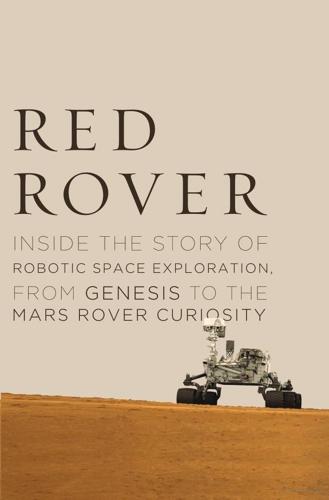
Red Rover: Inside the Story of Robotic Space Exploration, From Genesis to the Mars Rover Curiosity
by
Roger Wiens
Published 12 Mar 2013
In addition, the projected delivery date for the gears was getting later and later, which would require JPL to keep more people on the project longer, running up staffing costs. The rover was facing a cost crunch. But to NASA, this was only a part of a bigger picture of increases among all missions. In the NASA portfolio were missions at various stages. Some were almost ready to launch, while others, like the James Webb Space Telescope, were still in the planning and feasibility stages. Some missions, like the successful MER twins, had launched some time ago and were asking for mission extensions. All of these cost pressures were now brought up to a new NASA associate administrator for space science, Dr. Alan Stern. Dr.
…
Accelerometers, 60 Aerogel collectors, 87 Aerogel, described, 86 Alpha-particle x-ray spectrometer (APXS), 109–110, 160, 171, 212 Aluminum, 17, 162, 174 American Association of Variable Star Observers, 9 Ames Research Center, 76, 77, 101, 169 Anders, William, 7–8 Antenna motor, 146 Apollo 7 mission, 6 Apollo 8 mission, 6, 7–8 Apollo 11 mission, 17, 71–72 Apollo 16 mission, 17 Apollo missions, 4 aim of, 6 capsules used for, 144 cost of, 20 costs since, 15 and Earth-based laser systems, 71–72 first of, to the moon, as a manned mission, 7–8 first planned return of a capsule since, 30, 47 laser altimeters on, 72 lunar soil from, 17 next logical step following, 87 as sample-return missions, 18, 20 and XRD instruments, 169 Apollo-Soyuz project, 95–96 Argonne National Laboratory, 27, 71 Arizona State University, 85 Arm motors, 145–146 Arm, rover unit, 75, 98, 99, 107, 109, 110, (ins. img. 15), 127, 142, 145, 162, 164, 171, 175, 195, 196, 212, 214 Arvidson, Ray, 77, 177 Assembly, test, and launch operations (ATLO) phase, 139–140, 146–147 Asteroids, 14 Atlantis, space shuttle, 188 Atlas rockets, 187–188 Atlas V, 187, 188, 191, 201 Baldonado, Juan, (ins. img. 3) Balloon tanks, 187 Barefield, James, 174 Barraclough, Bruce, 35–36, 38, (ins. img. 6), 130, 134, 186, 206 Basalts, 173–174, 213, 214 Baumgartner, Eric, 75 Bender, Steve, 153, 157–158, 162 Bernardin, John, 126 Beryllium, 126, 138 Bibring, Jean-Pierre, 180–183 Blake, Dave, 133, 169–170 Blaney, Diana, 106, 141 Boeing, 24, 96 Bolden, Charles, 209 Borman, Frank, 8 Bradbury Landing Station, (ins. img. 16), 211 Bridges, Nathan, 101 Burnett, Don, 4, 16–17, 18, 19, 21, 24, 25, 27, 33, 35, 47, 49, 57, 59 Calcium, 174, 175 California Institute of Technology (Caltech), 3, 12, 13, 18, 26, 73, 85, 182 Caltech Division of Geology and Planetary Sciences, 26, 27, 172 Canada, 107, 171, 204 Cape Canaveral celestial mechanics involved in launching from, 41 first major launch at, since last shuttle launch, 188 launch of Genesis at, 185 space shuttle at, 45 Capsule Curiosity, (ins. img. 12), 161, 164, 188, 189, 193, 194, 203, 206, 208, 210, 217 Genesis, 30, 35, 39, 47, 48, 49, 51, 52–53, 54, 55, 56, 57, 60, (ins. img. 1, 2), 193 Mars Science Laboratory, 144, 145 SCIM, 93 Stardust, 60 Capsules on the Apollo missions, 6, 18, 30, 144 for Mars Exploration Rovers, 145 reentry, 18, 19, 20, 23, 24, 47, 51, 52, 53 Carbon, 47, 64, 73, 175 Carbon dioxide, 146 Carbonates, 174, 175, 176 Cassini, mission to Saturn, 14, 160 Challenger disaster, 13, 92 Charge-coupled devices (CCDs), issues with, as detectors, 117–120, 137–138, 151, 152–153, 154, 155 ChemCam advantage held by, 106 ATLO phase and, 139–140 box protecting, on the Curiosity rover, (ins. img. 15) and budget issues, 110, 126, 130 cancellation of, 130–134, 135, 160, 172, 191, 192 CCD detectors for, issues with, 117–120, 137–138, 151, 152–153, 154, 155 challenge of interfacing, with the rover, 112–113 cold-temperature communication problem, 151 continued funding of, 135 cost review, 140–141 cost-cutting actions to stop cancellation of, 133, 135, 138, 152 deciding on naming LIBS instrument project as, 102 delivery date to JPL, 138, 139, 140 delivery review and performance of, 159–160 design review, 116 electrical cable damaging parts in, effect of, 134–135 French collaboration on, 102, 103, 108, 116–117, 122–123, 126, 129, 130, 131, 132, 133, 134, 138, 139, 159, 160, 161 halfway into developing, euphoria wearing off during, 121–122 initial turn-on and electrical checkout after landing, 210 installation of, on Curiosity, 158, 161 instruments complementing, 109–110 laser accident and work on, 106 laser instrument testing, (ins. img. 6), 129 letter-writing campaign to save, 132, 135 likelihood of success of, presentations on, 191–193 Mars landing-site meetings and, 177, 181 mast and voltage issues, 126 and the MSL launch delay, 148 and the MSLICE program, 195 nearly finishing the prototype for, 124 new detectors for, 120, 153, 155, 156 optical fiber issues, 113–116, 120–121, 122, 126, 138 optical lens design and, 156, 157–158 potential disaster scenarios involving, and impact, 193–194 projected performance of, review of, 115–116 proposal for, submission of, 102–103 radiation and, 154 rebuilt demux for, 156, 157 restoring full funding of, 141 selection of, as a MSL rover instrument, 108–109 as a sentry, 109 “shake and bake” tests involving, 138, 156, 163–164 and simulations using a mirror, 123, (ins. img. 7) Slow Motion Field Test and, 173, 174 spark produced by the laser from, (ins. img. 8) team members of, gathering to watch Curiosity’s landing, 206 temperature issues facing, 151, 154, 155–156 testing, after installation on Curiosity, 161–164 total cost of, 160 turn-on and testing after landing, 212–213 weight issue involving, 126 whole team for operating, 196, 205 See also Laser-induced breakdown spectroscopy (LIBS) CheMin XRD instrument, 133, 169, 170, 212 Chen, Allen, 207 China, 96 “Christmas tree” spacecraft, 15, 18, 20 Clark, Ben, 101 Clegg, Sam, 130, 173, 174, 175, 197, 204 Cold War, 28, 30, 188 Columbia Space Shuttle disaster, 55, 92, 93, 94, 185, 193 Comet Rendezvous and Asteroid Flyby (CRAF) mission, 14 Comets, 14, 19, 20 See also Stardust Compact Reconnaissance Imaging Spectrometer for Mars (CRISM), 179 Contamination from an aeroshell, 89, 90 on Apollo missions, 17 from Earth, 19 Genesis mission and, 47, 52, 61 incoming, checking for, 139 COTS (commercial, off-the-shelf) parts, 78, 113 Cremers, Dave, 69, 70, 72, 73, 74, 75, 76, 78, 79, 80, 81, 102 Cronkite, Walter, 7 Curiosity anomalies present during the landing rehearsal for, 198–199 answering old and new questions with, 214 box protecting ChemCam on, (ins. img. 15) communications with, during landing, 203–204 complicated operating procedure for, 195–196 countdown to launch of, 188 delayed launch of, effect of, 160, 179 EDL stage of, 161–162, 164, 203, 208 electrical motors for, 154–155 firing on a Mars rock outcrop, (ins. img. 5) first images of Mars from, 208–209 gravel damage to, 213–214 heat source for, 154, 178 imagining potential disaster scenarios involving, 193–194 impending launch of, 187 installation of ChemCam on, 158, 161 instrument turn-on and testing after landing of, 211–212 kickoff meeting for, 167–172 and the landing ellipse, (ins. img. 11), 202 landing of, 191, 193, 208 landing publicity for, 205 landing risk for, 192 landing site selected for, (ins. img. 11, 12, 16), 183, 201, 202 landing time for, by time zone, 203 landing trajectory for, 202, 203, 204 landing window for, 201 and landing-site meetings, 177–183 latest batch of images and spectra from, analyzing and discussing, 211 launch of, 188–189 launch rocket for, 187, 188, 191 launch stages for, 188 launch window for, 188, 201 lifespan of, 213 lowering of, by Sky Crane, (ins. img. 13), 162 naming MSL as, 148 and new questions arising from Glenelg site, 214 news about the landing of, 203 next set of Mars images from, 209–210 operating temperatures for, 154–155 operational readiness tests for, 194–195, 194–195, 196–199 parachute for, (ins. img. 12), 194, 204, 207, 210 at Paris air show, (ins. img. 9) press conference after landing of, 209 program for operating, 195 reinstalling RTG on, 164 remote operations of, preparing for, 213 revelations from first few sols of driving, 213 route for, 201–202 RTG-powered, 164, 178 “shake and bake” tests for, 163–164 simulated view of, as it approached Mars, 206, 207 Slow Motion Field Test for, 172–176 team leadership of, 167–172 testing ChemCam after installation on, 161–164 thermal mismatch in design of, addressing, 153–156 total cost of, 160 view of Mount Sharp from, (ins. img. 14) weight of, (ins. img. 10) See also Mars Science Laboratory (MSL) Delapp, Dot, 212 Delta II rocket, 45 Descopes, 125–126, 128, 129, 132 Discovery missions approach to, 15, 16 competing for, 20–22, 27, 31, 34, 35, 85–86, 91 cost cap for, 20 fitting a sample-return mission into, 18 See also Genesis Disney, 148 Doppler tone, 198 Downlink leads, 195, 196, 197 Dugway Proving Ground, 52, 53 Dust-collection concept, 86, 87 See also Sample Collection for Investigation of Mars (SCIM) Dynamic Albedo of Neutrons (DAN), 212 Earth close approach of Mars to, 8, 9, 94, 147, 149 dominant rock types on, 174 gravity of, 19 half-ellipse configuration involving Mars and, 201 land area equal to, 177 magnetic fields surrounding, 19 nitrogen isotopes of, 64 orbiting the Sun, 8, 147 oxygen isotopes of, 62, 63 passing Mars, cycle of, 87, 147, 149 rock under the oceans of, 173 tilt of, for launching missions, 41, 45 Earth-to-Mars communications, simulating, 78 Eberswalde site, 181, 182 Edgett, Ken, 168 Elachi, Charles, 132 Electrical leads, 118–119 Engineering models, 111–112, 122, 124, (ins. img. 7), 125, 129, 134, 135, 137, 138, 142 Engineering teams, 112 England, London, 205 Entry, descent, and landing (EDL) stage activation of, 208 command for, 203 described, 161–162 rover mated with, 164 team involved with, 203, 205, 207–208, 209, 210 European Space Agency, 191 European spacecraft, Halley and, 14 Ferris, Monty, 78, 79, 80, 83, 98 FIDO (Field-Integrated Design and Operations) rover, 77 First Lagrangian (L1) point, 19 Fleming, Cliff, 52–53 Foehlinger, Chuck, (ins. img. 3) France proposals from, for the mobile laboratory, 107 Toulouse, people in, watching Curiosity’s landing, 205 French scientists, collaboration with, 98, 100–101, 102, 103, 106, 108, 116–117, 122–123, 126, 129, 130–131, 132, 133, 134, 138, 139, 159, 160, 161, 179, 180, 212, 213 See also specific scientists Gale Crater, (ins. img. 11, 12, 14), 179, 181, 182, 183, 202, 207, 210, 211, 213, 214 Galileo probe, 14 Gamma-ray detectors, 141 Gamma-ray spectrometers, 107 Gellert, Ralf, 171 Genesis, 8, 74, 79, 86, 87, 90, 93, 95, 118, 206 analysis of the samples from, 62, 63 attachment points of the capsule for, 53–54 building the prototype for, 27 contamination of samples from, 61 contingency measures for, 57, 59 crash landing of, and impact of the capsule, 55–56, (ins. img. 2), 193 delayed launch of, 42–43, 45, 46 designing improvements to the model for, 27–28 dry run presentations on, 28–29 and extraction of the solar sample canister, 57–58 failing final selection for first Discovery mission, 31–32 finessing the concept for, period of, 33, 35 first long-term countdown to the launching of, 45–46 full deployment of, (ins. img. 1) giving pre-launch interviews on, 41–43 good solar-wind samples from, obtaining, 58, 59 as a historic mission, 45 and the instrument used to collect oxygen and nitrogen, (ins. img. 3) launch of, 46, 98, 185, 188 launch readiness review of, 44 launch window of, 41 and locating the concentrator target, 58 main goal of, 62 measurement of solar-wind oxygen from, 63, 64 midair capture of reentry capsule planned for, 30, 51, 52–53, 54 month after launch of, 47–48 negative chute for, 55 nitrogen studies from, 64 opening of the capsule for, 47 overheating problem facing, 47–48 picked for the next Discovery mission, 35 planned trajectory of, and reentry sequence, presenting, 29–31 possible disaster scenarios considered in planning, 55–56 potential reentry wind issue and, 30–31, 35 presentation of, before NASA review board, 29–31 press conferences on, 53, 55, 56, 57, 58–59 proposal submitted for, as finalist selection, 27 purpose of, 42 reason for the crash of, 59, 60 and recovering the samples from the sample canister, 59, 61 and recovery of the capsule pieces, 56–59 representing, before a different NASA review board, 35 resonance ionization mass spectrometry and, 27, 71 resubmitting a proposal of, for the next Discovery mission, 34 results from, 63, 64 reviews of, prior to launch date, 44 sample canister lid from, (ins. img. 1) selected by NASA again as a mission finalist, 34 solar-wind concentrator for, 27, 35, 36, 37–38, 39, 58, 63, (ins. img. 1) as a success, 64–65 testing the prototype for, 28 time period to fully develop and test instruments for, 35 two years leading up to the launch of, 43–44 See also Solar-wind sample-return mission Geomorphologists, perspective of, 179–180 Germany, 107, 171 Getting-acquainted process, 112 Gibson, Bill, 140, 141 Glenelg, 211, 214 Goddard Space Flight Systems, 122, 168 Goldin, Daniel, 14–15, 20, 87 Grotzinger, John, 172, 181, 182, 206, 207 Gusev Crater, 214 Gypsum, 175, 176 Halley, comet, 14 Hassler, Don, 171 Hazcams (Hazard Avoidance Cameras), 204, 209 Heat shield, 53, 57, 145, 193, 208, 210 Herkenhoff, Ken, 101 HiRISE instrument, images captured by, (ins. img. 12), 199 Hohmann transfer, 201–202 Horz, Fred, 37 Hubble Space Telescope (HST), 14 Hughes, 96 Imagers, 102, 109, (ins. img. 14, 16), 160, 168, 212, 214 Infrared spectroscopy, 106, 110, 154, 179, 180 Intercontinental ballistic missile (ICBM), 28, 96, 187, 188 Iron, 173 Isotope ratios, 62, 63, 64, 87, 99, 109 James Webb Space Telescope, 127–128 Jet Propulsion Laboratory (JPL), 26, 37, 41, 47, 59, 101 assisting in planning solar-wind sample-return mission, 20, 23–24, 25 ChemCam and, 114, 116, 119, 120, 122, 126, 131, 132, 134, 137, 138, 139, 140, 153, 155–156, 157, 158, 159, 160, 161 dry run presentations by, involving Genesis, 28–29 first woman scientist at, 18 infrared spectrometers and, 106 and the landing of Curiosity, 191, 206 landing publicity videos released by, 205 and the launch of Curiosity, 189 Mars yard at, (ins. img. 10), 212 media relations at, 56 and the MSL engineering model, 112, 142 operational readiness tests at, 194–195, 196, 197, 198 operations hub at, 203 origins of, 74 payload managers at, 108, 120, 130, 137, 140, 156 press area at, 209 rovers and, 74, 75, 76, 77, 146, 147, 148, 167, 170, 173, 202 satellites and, 74 Slow Motion Field Test and, 174 thermal chamber at, 163 wooing scientists as possible leaders at, 18 See also specific JPL projects and personnel Johnson Space Center, 11, 37, 39, 92 Juno spacecraft, 188 Jupiter, 14, 20, 149, 168, 188 K-9 rover, 77, 113 Kennedy, John F., 6 Kennedy Space Center.
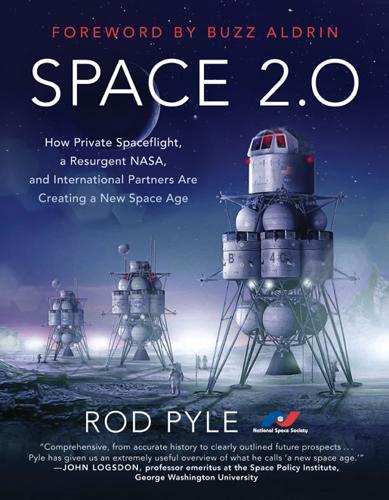
Space 2.0
by
Rod Pyle
Published 2 Jan 2019
This phenomenon was identified by Stanley Rosen in 1976 and written about extensively by American author Frank White in 1987.17 The resulting impulse prompts the astronauts to share their feelings about the fragility of the earth, the pettiness of human conflict, and the need to work cooperatively for the betterment of all humanity. Technicians working on the James Webb Space Telescope at NASA’s Goddard Space Flight Center in Maryland. Many NASA employees will tell you that the exploits of the agency during the space race inspired them to careers in aerospace and science. Image credit: NASA It’s not always easy for astronauts to explain their feelings on such matters—these are people who, quite often, have spent a large part of their lives indoctrinated in the military precision of training as a test pilot (or military aviator), and the words don’t always come easily.
…
V.), 172, 173 dominance, 76–77 Double Asteroid Redirection Test mission (DART), 228, 228–229 Dove satellite, 160 Dragon 2, 11, 19, 50, 50, 55, 123, 130, 159, 210 Dragon rocket, 119, 123, 126, 130 Draper Fisher Jurvetson Venture Capital (DFJ), 155, 158 Dream Chaser, 11, 52, 52, 55 Dyson, Freeman, 36, 241 Dyson Sphere, 241 E Earth orbit, 245–246 Earth suborbital (as space destination), 59, 245–246 East India Trading Company, 125–126 Edwards Air Force Base, 95 Ehrenfreund, Pascale, 173–174 Elachi, Charles, 169–170 electrical fields, 90 Electron rocket, 103–104 elimination of waste, 70, 107 Endeavor, 3 Energia booster, 128 entrepreneurs. see space entrepreneurs Epsilon rocket, 175 ESA. see European Space Agency European Space Agency (ESA) accomplishments of, 172–174 and crewed landings, 247 defined, 289 HTV cargo, 173 and international space agencies, 181 lowering of launch costs by, 148 modules, 166 Moon Villages, 65, 242 and NASA, 170 partnerships with, 48, 167, 195 successful trips to Mars, 177 work on Huygens probe by, 169–170 EVAs. see Extra Vehicular Activities Eve airplane, 95, 96, 101 exercise, in space, 82 expeditionary model, settlement vs., 237 Explore Mars, 270 Explorer 1 satellite, 40, 40–41 extended confinement, 76, 76 Extra Vehicular Activities (EVAs), 70, 71, 107 F FAA. see Federal Aviation Administration fairings, 119, 126, 194, 259, 261. see also payloads FAITH (Final Assembly, Integration, and Test Hanger), 95, 100 Falcon 1 (shuttle), 115, 126, 156, 156, 158, 159, 160 Falcon 9 (shuttle) for commercial launches, 194 under construction, 215 cost of, 128, 130 and COTS program, 215 defined, 289 first flight of, 126 first launch of, 156 with hypersonic grid fins, 127 Merlin engine for a, 131 and reusability, 39, 119, 259 and SpaceX, 11, 112–115, 113–115, 118, 120–121 as US rocket, 55 at Vandenberg A.F.B., 133 Falcon Heavy construction of, 123 defined, 289 Delta IV Heavy and, 142, 146 first launch of, 129, 255–257, 256, 258–261, 261 for interplanetary travel, 128 New Glenn and, 136, 137, 245 reusability of, 259 and SpaceX, 11 as US rocket, 55 Farshchi, Shahin, 161 FCC (Federal Communications Commission), 131 feathering system, 98–99 Federal Aviation Administration (FAA), 99, 131, 220 Federal Communications Commission (FCC), 131 femtosats, 103 Final Assembly, Integration, and Test Hanger (FAITH), 95, 100 Firefly Aerospace, 103 flight surgeons, 73, 79, 108 Forbes magazine, 151 Founders Fund, 126 France, 79, 172–173 Freedom space station, 166, 166 French postal services, 211 Friedman, Louis, 265 Friendship 7 spacecraft, 164 fuel for achieving orbit, 16 cost of, 128 for leaving Martian surface, 63 liquid methane as, 138 for radiation shielding, 88 for SpaceX rockets, 144 storage of, 148 fuel depots, 159, 204, 208, 235 fuselages, 122, 123 G Gagarin, Yuri, 42, 42 galactic cosmic rays (GCRs), 83, 90, 290 Garver, Lori, 30, 30, 209, 226, 251 Gateway, 241–242, 246, 249, 289 GCRs (galactic cosmic rays), 83, 90, 290 Gemini 4 mission, 71 Gemini spacecrafts, 44, 45, 71, 192 genetic damage, from radiation, 86 George Washington University, 186–187 geostationary Earth orbit, 59–60, 130 geosynchronous Earth orbit, 59–60, 206 German Aerospace Center, 172–173, 176 Gerstenmaier, Bill, 168, 210–211, 242 getting involved, 263–271 citizen groups, 264–265 expanded opportunities for, 263–266 indirect involvement, 264 and the internet, 264 organizations for, 266–271 Glenn, John, 42, 142, 164 Goddard Space Flight Center, 31 GOES weather satellite, 235 Google, 160 government spaceflight, 246 GPS, 28 gravity artificial, 80, 80–82 on Earth, 20, 20 effects of, on astronauts, 22 micro-, 82, 292 overcoming, 16–18 Greason, Jeff, 217, 219, 251–252 Great Britain, 177, 211 Griffin, Mark, 35, 237, 238 Gross Space Product, 207 Guardian, 98 H H3 launch vehicle, 175 Hadfield, Chris, 179 “handshake in space,” 166 Harvard University, 36 Haughton-Mars Project Research Station, 270–271 Hawking, Stephen, 35, 235 Hayabusa probe, 175, 175 Hayn Crater, 62 heat-absorbing tiles, 18–19 high-altitude aircrafts, 69–70, 70 The High Frontier: Human Colonies in Space (O’Neill), 240, 241 Highway 58 (California), 94 HI-SEAS simulator, 78 The Hitchhiker’s Guide to the Galaxy (Adams), 261 Hopkins, Mark, 36, 265 Hoshide, Akihiko, 28 HTV spacecraft, 173–174, 175 Hubble Space Telescope, 2 Hudson Bay Company, 251 Human Exploration and Operations, 168, 210 humans destinations for, in space, 59–66 and need for gravity, 81 spacecrafts for transporting, 49–55 in spaceflight, 44–48, 158, 177–178, 264 survival of, 20–21, 34–36, 234–236, 238 human waste, elimination of, 70, 107 Huygens probe, 169–170 hypersonic grid fins, 127, 127 I IBM, 157 Icarus Interstellar, 270 ICBMs, 230 IKAROS spacecraft, 175 incentives, for space settlement, 250–252 Indian Space Research Organization (ISRO), 148 accomplishments of, 176–178 collaboration with Russia, 177–178 lowering launch costs, 246 Mangalyaan Mars orbiter, 177 Mars Orbiter Mission (MOM), 177 NASA partnership with, 177, 178 PSLV rocket, 176 space entrepreneurs in, 181 Indian Space Society, 269–270 infrastructure. see space infrastructure In-Situ Resource Utilization (ISRU), 290 Institute of Biomedical Problems, 79 International Astronautical Congress, 236, 244 international cooperation, 163–181, 164, 266–271 and international accomplishments, 172–179 and international space agencies, 180–181 ITAR, 168–170, 172 space race as example of, 163–168 International Space Development Conference, 35 International Space Station (ISS), 53, 168 air circulation in, 74 aluminum hulls in, 87 Antares rocket and, 153 Apollo mission and, xiii–xiv Atlantis mission and, 2–3, 5–6 aurora as seen from, 61 BEAM module on, 54 cargo on, 210 centrifuges on, 81 cost of, 168 decommission and privatization of, 246 defined, 290 Dragon and, 50 Dream Chaser and, 52 and European Space Agency, 172 as example of international cooperation, 48, 163, 165, 195 as Freedom station, 166, 167 hardware on, 153 HTV cargo, 173 Kelly brothers on, 75 André Kuipers on, 82 launching to, 15–16 in low Earth orbit, 59 Elon Musk and, 117 NASA and, 65 National Laboratory, 216 permanent occupation of, 53 private space companies and, 9, 210 shuttle approaching, 46 Soyuz and, 49, 185, 189 Starliner and, 50 3-D printers on, 107 Unity module, 171 window structures aboard, 77, 77 International Space University, 268 International Traffic in Arms Regulation (ITAR), 168–170, 172, 195, 198–199, 290 internet, 29, 130–132, 264 investors. see space investors involvement in space, 263–271 Iran, 180 isogrids, 122, 123 ISRO. see Indian Space Research Organization ISRU (In-Situ Resource Utilization), 290 ISS. see International Space Station ITAR. see International Traffic in Arms Regulation Iwamoto, Hiro, 174–175 J Jackson, Michael, 34 James Webb Space Telescope, 31 Japanese National Space Agency (JAXA), 290 accomplishments of, 174–175 Hayabusa probe, 175 HTV cargo, 174 Mars missions of, 175, 177 modules, 166 partnerships with, 48, 167, 175 probing by, 243–244 Jet Propulsion Laboratory (JPL), 34, 41, 169, 198, 239, 265, 290 Johnson Space Center, 30–31, 73–74, 195 JPL. see Jet Propulsion Laboratory Jupiter, 20, 177, 197 Jurvetson, Steve, 126, 131–132, 155, 158–160, 159, 212 K Kelly, Mark, 75, 75–76 Kelly, Scott, 73, 75, 75–76 Kennedy, John F., 13, 42, 164, 164–165 Kennedy Space Center, 6, 12, 30–31, 113, 255 Keravala, Jim, 250–251 Khrushchev, Nikita, 164, 164–165 kinetic impactor, 229 Kistler Aerospace, 137 Knight, Peter, 70 Kuipers, André, 82 Kymeta, 107 L L5 Society, 265 Lagrange points, 60, 64, 229, 237, 240, 248 Laser Bees, 230 LauncherOne, 100, 102 launch vehicles, 186, 187 lava tubes, 89, 243 LEO. see low Earth orbit Leonov, Alexei, 45, 166 Link Space, 194 LMO (low Mars orbit), 60 Lockheed Martin, 50, 63, 141, 142, 144 Logsdon, John, 186–187 long-duration spaceflight, 75 Long March boosters, 49, 192–193 LOP-G. see Lunar Orbiting Platform-Gateway Los Angeles International Airport, 121 Lovell, Jim, 7 low bone density, 72 low Earth orbit (LEO) aluminum hulls for shuttles in, 87 Apollo 17 in, 205 aurora in, 61 capsule design for, 55 defined, 290 exploration beyond, 10 outposts in, 61–62 and radiation, 21, 82–85 satellites in, 107 as travel destination, xiv, 7, 59 low Mars orbit (LMO), 60 Luna 2 spacecraft, 183 Lunar and Planetary Institute, 233 Lunar Module, 141 Lunar Orbiting Platform-Gateway (LOP-G), 187, 241, 241–242, 247, 290 lunar rovers, 248 Lunar Roving Vehicle, 205 lunar space stations, 246–247 Luxembourg, 161, 180, 219 Luxembourg Space Cluster, 180 M Made In Space, Inc., 106–107 Maezawa, Yusaku, 129 magnetic field, on Earth, 22, 83, 84, 90 Manber, Jeffrey, 106 Mangalyaan Mars orbiter, 177, 177, 178 Mao Zedong, 192 Marius Hills, 243, 243–244 Mars Aldrin Cyclers on, 213 as candidate for human spaceflights, 62–63, 63 capsules orbiting near, 55 Chinese intentions of reaching, 197 collecting resources on, 218 colonies on, 34–35, 89, 238, 244 cost of sending humans to, 27 as destination, 60 and Earth’s gravity, 16 European probes on, 173 galactic radiation on, 84–85 and Gateway, 242 Indian orbiter, 177, 177, 178 JAXA plans to reach, 175 journeys to, 66 landings on, 46, 249, 250 as long-term goal for space travel, xiv, 161, 172 moons of, 60 orbiting of, 60, 249 and Orion capsules, 52 robotic rocket, 249 rovers on, 196, 239, 239 settlements on, 249–250, 253 simulation of bases on, 78–79 SpaceX plans for, 125–126, 129 successful trips to, 177 survival on, 20, 21 timeline to get to, 240–250 and United Arab Emirates Space Agency, 180 water-ice shields for living on, 91 water on, 206, 219 Mars-500 simulator, 79, 79 Mars Base Camp, 63 Mars Exploration Rover, 196 Mars First advocates, 62–63 The Mars Institute, 270–271 Mars Orbiter Mission (MOM), 177, 177, 178 Mars OXygen In-situ utilization Experiment (MOXIE), 239, 239 Mars Sample Return, 249 Mars Science Laboratory, 84 The Mars Society, 265, 266 mass, of spacecrafts, 77, 87–88 mass reduction, 122, 123, 123 Maxar Technologies Ltd., 179 medical research, 27–28, 72–76 Mercury program, 2, 18, 19, 43, 44, 53, 59, 137, 178 Mercury Redstone 3 (MR-3), 43, 44 Merlin engine, 126, 128, 131 metamaterials, 107 Meyerson, Rob, 137–141, 139 microgravity, 82, 292 Microsoft, 102, 107 militarization of space, 170, 170–171 Mir space station, 2, 44, 46–47, 48, 54, 73, 166, 166–167, 184–185 Mitchell, Edgar, 32, 33 Mojave, California, 94 Mojave Airport, 94 Mojave Desert, 98, 111 Mojave Spaceport, 94–95 MOM (Mars Orbiter Mission), 177, 177, 178 moon (Earth’s), 20, 158, 161 bases on, 247 as candidate for human spaceflight, 62 capsules orbiting near, 55 collecting resources from, 205, 206, 218 as destination, 60 exposure to radiation on, 83 first humans on the, xiii–xiv galactic radiation on, 84 and Gateway, 242 landing on, 247 manufacturing on, 247 mining on, 88, 89, 247 north pole of, 62 as objective for SpaceX, 125 orbiting of, 59, 59, 60 orbit of, during SELENE mission, 175 and Orion capsules, 52 outpost on, 237 as short-term goal for space travel, 172 space settlements on, 242–245 storage depots on, 221 surface of, 60 travel to, 66 water ice on, 206 Moon Express, 211, 218, 220 Moon First advocates, 62 moons (in general) of Mars, 60, 175 Saturn’s moon Titan, 170 “Moon Village,” 65, 173, 242, 243 Moscow, Russia, 28, 79 MOXIE (Mars OXygen In-situ utilization Experiment), 239, 239 Mueller, Rob, 251 Multi-Purpose Logistics Module, 2 Murray, Bruce, 265 muscle mass, reduction in, 73 Musk, Elon “billionaires’ club” and, 151, 154 Charles Bolden and, 116 on colonizing Mars, 34–35 and creation of SpaceX, 115–119 on doing something that is important, 1 Falcon rockets and, 255–257, 259–261 and international space agencies, 181 Steve Jurvetson and, 158, 159 lunar base supported by, 244 on moving humans to space, 236 prediction of launch prices by, 148 and reusability, 39 and SpaceX, 7, 118, 123–126 Tesla roadster, 260–261 mutual funds, for private investors, 154 Myhrvold, Nathan, 107 N N1 booster, 43 N1 moon rocket, 185 NAFCOM (NASA Air Force Costing Methodology), 215 NanoRacks, 105, 105–106, 154, 157, 198 nanosats, 103 NASA. see National Aeronautics and Space Administration NASA Air Force Costing Methodology (NAFCOM), 215 NASA Ames Research Park, 106 NASDA (National Space Development Agency), 174 National Aeronautics and Space Administration (NASA), 290. see also Jet Propulsion Laboratory (JPL) asteroid detection systems, 224 and Bigelow Aerospace, 54 budget of, 26–27, 178 Bill Clinton’s changes to, 167 Commercial Crew Program, 135 and cost of launching water into orbit, 88, 89 and crewed landings, 247 and Dream Chaser, 52, 52 and European Space Agency, 170 and Falcon Heavy launch, 257 history of, 1–13 and human spaceflight missions, 61, 65 legal constraints around, 168–170 Lunar Orbiting Platform-Gateway, 60 mapping of asteroids by, 224, 226, 227 medical professionals from, 73–74 MR-3 flight timeline from, 44 National Space Council and, 213, 214 partnerships with, 9, 129–130, 140–141, 153, 158, 174, 175, 177, 178, 179, 247 and permanent space settlement, 237–239 psychologists/psychiatrists working at, 77–78 and public-private partnerships, 209–211 safety regulations at, 99–100, 107 simulations created by, 78 and SLS/Orion, 52, 53, 55 and spaceflight-capable nuclear reactors, 90 space infrastructure and, 209–217 Space Portal, 199 and space race, 42–44 and space settlements, 237–239, 241–244 and SpaceX Dragon, 50, 50 sponsored events for start-ups, 156 study of space colonies by, 236 study of space radiation by, 84 use of robotics by, 239 US workforce and spending by, 29–30 National Aeronautics and Space Council, 213, 214 National Defense Authorization Act (2016), 119 nationalism, 163–164 National Laboratory, 216 National Oceanic and Atmospheric Administration, 235 National Space Council defined, 290 NASA and, 65, 213, 214 Scott Pace and, 171, 198, 237 reactivation of, 10, 10 rules of the new, 218, 220 National Space Development Agency (NASDA), 174 National Space Society, 266 defined, 291 founding of, 264–265 International Space Development Conference, 35, 36 Bruce Pittman and, 199 Space Settlement Summit, 204 George Whitesides and, 97 National Transportation Safety Board (NTSB), 99 Navy, 76, 77 near Earth objects (NEO), 290 New Armstrong, 51 New Glenn, 51, 136, 136–139, 244, 245, 290–291 New Horizons Pluto mission, 132 New Line 1 vehicle, 194 New Shepard, 51, 51, 136–139, 137, 139, 290–291 NewSpace, 137, 152, 291 new space race, 135–148 Blue Origin and, 135–141 United Launch Alliance and, 141–148 New Zealand, 104 normal bone density, 72 North Korea, 180 Northrop Grumman Corporation, 102, 121, 152, 154 Northrop Grumman Innovation Systems, 12, 102, 152, 174 Northwestern University, 125 Norway, 153 NSS (National Space Society), 291 NTSB (National Transportation Safety Board), 99 nuclear reactors, for spaceflight, 90 O Obama, Barack, 6, 9, 56–57, 219, 226 “offshoring,” 178 OffWorld, 250 O’Neill, Gerard, 240–241, 250, 265, 269 O’Neill space cylinders, 240–241, 241 One Space, 194 OneWeb, 131 Orbital ATK, 12, 102, 103, 152, 153, 154 orbital refueling depot, 205 Orbital Sciences, 152, 158 orbiting stations, 63–64, 71–72 ore, from asteroids, 64 organizations, space-related, 266–271 Orion, 291 Altair and, 8 capsule, 78 for deep-space exploration, 53 as government spaceflight, 246 rendezvous with asteroid, 56–57 Soyuz and, 186 and Space Launch System, 9, 10, 52, 55, 246, 249 Outer Space Treaty (1967), 165, 165, 218, 219 outposts, 237–238 overview effect, 32, 32 Oxford University, 235 ozone layer, 228 P Pace, Scott, 171–172, 196, 198, 214, 237 Paleogene era, 223 partial-gravity environments, 22, 81 Passengers (movie), 81 passive radiation shielding, 90 payloads, 119, 126, 194, 259, 261, 291.
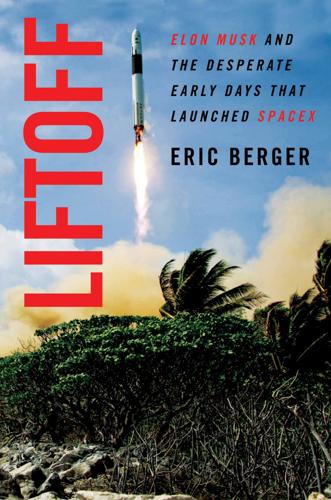
Liftoff: Elon Musk and the Desperate Early Days That Launched SpaceX
by
Eric Berger
Published 2 Mar 2021
The Malaysians had stuck with the company through six years and three failures. And now, the four-hundred-pound Earth-observing spacecraft would get its ride to space. The launch on the afternoon of July 14 proceeded without incident. SpaceX hired Roger Carlson, a physicist from Northrop Grumman who had worked on the James Webb Space Telescope, to direct launch operations from Kwajalein. Following the flight, Tim Buzza stood with Carlson on one end of Omelek, talking about the future of the company. Four years had passed since Buzza and about two dozen engineers and technicians had come there to build a launch site from nothing.
…
(Clark), 11 Illeginni Island, 169 Illinois Institute of Technology, 100 Intercontinental ballistic missiles (ICBMs), 10, 65, 169 International Astronautical Congress (2008), 202 International Date Line, 194–95 International Science and Engineering Fair (1978), 30 International Space and Development Conference (1989), 63 International Space Station, 203, 217 Kistler contract, 109, 110, 114 SpaceX and Dragon, 217, 219–20, 221, 230 Iowa State University, 40 Iraq war, 145, 185 Iterative design, 24, 104 Jabwi (Marshallese native), 133 James Webb Space Telescope, 222 JLG lift, 73–74, 82, 225 Jobs, Steve, 106 Johnson, Steve, 18 Johnson Controls, 31 Johnson Space Center, 102 Jung, Josh, 49, 262 Kassouf, Phil, 262 background of, 20 Bjelde’s interview and, 5–6, 7, 9 departure of, 172 Flight One, 86 Flight Two, 132–33 Flight Three, 209 Flight Four, 209 hiring of, 20–21, 23 Omelek site, 72 Kennedy, Don, 162–63 Kennedy Space Center, 24, 54, 70–71 Kestrel engine, 155–56, 190, 263 Flight Two, 137, 142 Flight Three, 162–63, 177 Flight Four, 205, 206–7, 212 naming of, 38 skirt extension, 161–63 Kingman Reef, 137 Kistler Aerospace, 107, 108–10, 143 Kistler K-1, 108, 109 Koenigsmann, Hans, 254–55, 262 Air Force and, 61–62 background of, 70–71 Costco snack runs, 23 Falcon 1’s Washington, D.C. debut, 106 Flight One, 90, 92, 122 Flight Two, 127, 131–32 Flight Three failure, 181–82, 183 Flight Four, 199–200 launch, 201–2, 204–5 success, 212–13 hiring of, 15, 16, 80–81 Kassouf’s hiring, 20, 23 Maser’s hiring as CEO, 125 at Microcosm, 15, 50, 71, 79–80, 95 Omelek site fact-finding visit, 54–55, 56–57, 71 first launch attempt, 79 move and infrastructure build-out, 71–72, 74–75 reusable launch systems, 234 scuba diving at Kwajalein, 69–70 Koopman, George, 62–64 Korolev, Sergei, 91 Kwajalein Atoll.

How to Spend a Trillion Dollars
by
Rowan Hooper
Published 15 Jan 2020
Its replacement, the TESS satellite, is tasked with looking for exoplanets closer to Earth. Once TESS (the acronym stands for ‘Transiting Exoplanet Survey Satellite’) has found these planets, we can train different instruments on them to measure their mass and atmosphere more closely. One of these instruments will be the James Webb Space Telescope, which has also been massively delayed. The problem is not so much the technical difficulty of making the thing as ballooning costs. It is now projected at costing $9.66 billion. Had we been responsible, obviously, these problems wouldn’t have affected us. The James Webb, a collaboration between NASA and the Canadian and European space agencies, is the successor to the Hubble Space Telescope, and will have a mirror five times larger than Hubble’s.
…
In Chile, for example, the European Extremely Large Telescope (ELT) is currently being built at altitude. Astronomers will use it to measure the speed of expansion of the universe accurately, and get an idea of how this might have changed with time. Telescopes are not cheap or easy to make. The successor to Hubble is the James Webb Space Telescope, but the project began in 1996, is currently due to launch in 2021 and its cost has risen from a projected $0.5 billion to an estimated $9.6 billion. The James Webb is an exoplanet hunter, and will allow us to look at the atmospheres of alien worlds (as we saw in chapter 6). Mountaintops are good for such telescopes because the atmosphere is thinner, meaning the stars twinkle less (twinkling is caused by turbulence in the atmosphere).
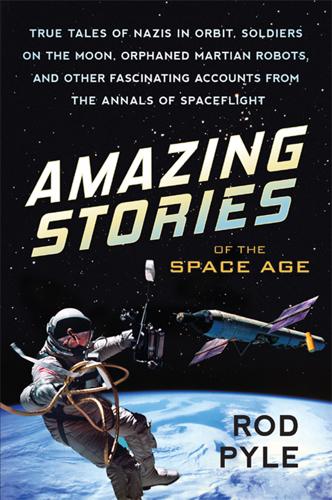
Amazing Stories of the Space Age
by
Rod Pyle
Published 21 Dec 2016
Since the Apollo program, which was a vastly less complex and smaller undertaking, cost over $20 billion by the time it was complete,15 it's clear that the scope of development costs for Horizon were vastly underestimated. But that's how space works—everything is harder than it looks, a reality that continues to rear its ugly head even today—witness the vast cost overruns of projects such as the space shuttle, the International Space Station, the Mars Science Laboratory, and the James Webb Space Telescope—all of which cost much more than originally planned. But all this overlooks one point—the almost primal drive to militarize the moon. While I've mentioned the “high ground” argument, let's look a bit deeper at its implementation. A quote from one of Horizon's leading advocates, Army General John Bruce Mendaris, is instructive: “The moon has no water, it has no air, but it has land.
…
See intercontinental ballistic missiles Illustrated Man, The (Bradbury), 218 Inconel-X alloy, 171, 180 India and unmanned spacecraft orbiting Mars, 293 inflatable space station, 81–89 NASA study of variations on, 82, 88 in-orbit restart of the engine, first, 119 insulation, 18, 48, 162, 216 in Columbia, 255, 256, 257, 258, 260 magnetic field suggested for atomic rockets, 59 See also heatshield intercontinental ballistic missiles (ICBMs), 24, 27–28, 71, 112, 177, 191, 306n11 tracking enemy, 275–76 See also Atlas rockets; Proton rocket; R-7 ICBM repurposed for Sputnik; Titan rocket International Space Station, 31, 57, 78–79, 81, 144, 211, 235, 236, 256 BEAM flown to, 88–89 building of, 261, 286 and debris, 258, 260, 276 Soyuz used as ferry to, 94, 200 testing of the SuitSat, 218 weapons forbidden except in a survival kit, 263–64 interplanetary radiation, 50, 306n9 ISP. See specific impulse ISS. See International Space Station James Webb Space Telescope, 31 Jet Propulsion Laboratory (JPL), 219, 220, 221, 223, 227–28, 229, 292, 296 Jodrell Bank Observatory, 207 Johnson, Lyndon, 102, 106, 131, 133, 136, 143, 313n4 Johnson Space Center (JSC), 102, 105, 240, 319n5 Johnston Atoll, 45–46, 309n13 JPL. See Jet Propulsion Laboratory Juno rockets, 25, 27 Jupiter rockets, 25 “Kaleidoscope” (Bradbury), 218 Karman Line (boundary of space), 160, 316n3 Kelly, Tom, 149 Kennan (KH-11) satellite, 144 Kennedy, John F., 34, 94, 140, 164, 186, 189, 201, 203 Kennedy, Robert, 142 Kennedy Space Center, 33, 251 Kerwin, Joe, 239, 241–42, 243, 244–46 KH-11 satellite, 144 Khrushchev, Nikita, 191, 203, 285 Kimball, Ward, 87 King, Martin Luther, Jr., 142 KIWI rocket, 310n5 Komarov, Vladimir, 185, 189–90, 192, 193, 194–98, 199 open letter from fellow cosmonauts on, 199–200 Korolev, Sergei, 186–87, 191–92, 202, 204, 205, 285, 286 death of, 194 Kosmos (Russian Earth-orbiting flights), 192–93, 205, 206 Kranz, Gene, 149–50, 152, 153, 154, 155, 156 Kubrick, Stanley, 87 Langley Research Labs, 114, 221 lasers, 263, 275, 276–77 launches, choosing logistical location for, 45–46, 304n12.
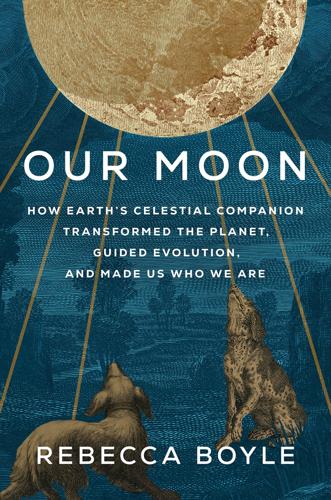
Our Moon: How Earth's Celestial Companion Transformed the Planet, Guided Evolution, and Made Us Who We Are
by
Rebecca Boyle
Published 16 Jan 2024
The right telescopes are technologically capable of seeing most of the light we cannot, but Earth gets in the way. Its atmosphere absorbs infrared, ultraviolet, X-ray, and gamma-ray radiation, which is part of the reason we can live here without being fried or having our DNA ripped apart. The atmosphere also blocks some visible light, which is why the Hubble Space Telescope, the James Webb Space Telescope, and other observatories are orbiting above us. In very high and dry places, like the mountaintops of Hawaiian volcanoes and the Andes Mountains in Chile, large radio telescopes can pick up long wavelengths of the electromagnetic spectrum. When I visited the Atacama Large Millimeter/submillimeter Array (ALMA), medics gave me an oxygen tank, which the engineers wore in backpacks.
…
In 2023, the space agency funded an even bigger telescope, which would use the Moon’s own soil to enable on-site construction of solar cells, antenna parts, and power lines. The FarView telescope will be able to see back to the so-called cosmic dark ages, when the first stars ignited—a time that has so far been invisible, even to the powerful James Webb Space Telescope. The Moon’s far side, shielded from Earthly emissions or atmospheric vapors, is a prime location to study the earliest days of the universe. In China, scientists are studying satellite arrays that would fly in formation around the Moon to make similar observations. But even purely exploration-driven Moon bases might invoke some of the Outer Space Treaty’s non-interference clauses.
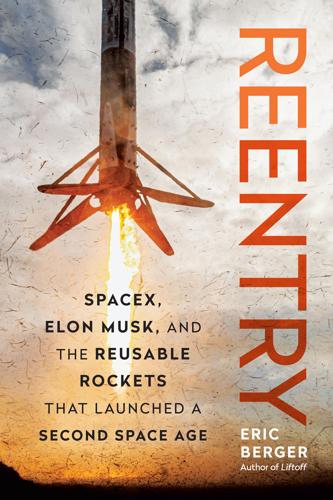
Reentry: SpaceX, Elon Musk, and the Reusable Rockets That Launched a Second Space Age
by
Eric Berger
Published 23 Sep 2024
The future of SpaceX is blowin’ in the wind Amid the mad scramble to deliver the Falcon 9 rocket to Florida that winter, one of the first big jobs was getting it down off the tripod in Texas. This task, improbably, fell partly on the shoulders of Carlson, who had only recently joined the company. A physicist by training, Carlson, forty-one at the time, had spent the previous six years working at Northrop Grumman helping to test and integrate the James Webb Space Telescope. But by 2008 he could see that the oft-delayed project remained a long way from going to space, and he could not envision hanging around to see a payoff. (It would not, in fact, launch for thirteen more years.) Carlson applied to SpaceX that summer and joined the company days before the full-duration firing.
…
Griffin, Mike Grinnell, Tyler Grissom Gus guidance, navigation, and control system Halliwell, Martin Hansen, Chris Harriss, Trip Hartin, Bryan Healey, Deirdre Helms, Susan Heltsley, Will Hicks, Neil Hollman, Jeremy Homer, Peter Horkachuck, Mike Howard, Andrew Hultgren, Eric Hurley, Doug Hutchison, Kay Bailey hypergols Inder, Gabrielle Insprucker, John Intelsat mission International Space Station Commercial Crew for Crew Dragon missions to Helms’ time on launch spaceports for requirements for private vehicle visits to research conducted on resupply of Sabatier process on International Space Station Advisory Committee internet satellites Iridium Isaacman, Jared James Webb Space Telescope JetBlue Juncosa, Mark Jung, Josh Just Read the Instructions, Kellie, Benjamin Kelly, Brian Kennedy Space Center kerosene, densifying Kislyak, Sergey Knight, Norm Koenigsmann, Hans Kononenko, Oleg Kuipers, André Kuiper satellites Kulin, Robb Kwajalein Atoll Landing Zone land landings Launch Complex Launch Complex 39A launch sites/pads. see also individual sites Lee, Cassie Li, Florence lidars Lim, Ricky Lindauer, John Lindenmoyer, Alan liquid hydrogen liquid oxygen densified and helium COPVs load-and-go fueling Lockheed/Lockheed Martin Loverro, Doug LOX ball Lucas, Kenton Lucid, Shannon Lueders, Kathy Lunar Lander Challenge Lyons, Lauren Maezawa, Yusaku “Magic Dragon,” Mann, Nicole Marino, Dan Markusic, Tom Marmac 300 barge Mars settlement Martin Marietta Massey, Eric Masten Space Systems McAleenan, Mike McAlister, Phil McAuliffe, Christa McDivitt, Jim McDonnell Douglas McDonough Marine Service McGregor test site McKeown, Matt McNally, Bill Mercury spacecraft Merlin 1C engines Merlin 1D engines Merlin engines Merritt Island methane fuel Miller, Kevin Mir space station Mock, Kevin Monteith, Wayne Moon, Scott Morgan, Kathy Mosdell, Brian Motorola Mueller, Tom Muratore, John Murray, Eric Musk, Elon Reeve and Altan and AMOS-6 on annual rocket launches on Block 5 rocket on Blue Origin and Buzza and Cape Canaveral launch site and Commercial Crew program and Couluris and Crew Dragon critics of decision-making time for demands made by Dnepr launches sought by and Dragon and drone ship design earliest employees of and Falcon 1 and Falcon 9 and Falcon Heavy financial problems for and first NASA contract and flight termination system on full, rapid reusability and future of SpaceX government critics of and Grasshopper Helms on and in-house building of fairings and Intelsat aborts and Iridium’s launch deal Koenigsmann on and landings and Launch Complex 39A lobbyists’ distrust of and Merlin engines and Mosdell and NEXT launch politics of and propellant densification public perceptions of and resupply missions on reusable rockets on reusable spacecraft on rockets’ horizontal velocity and Rose on rules and regulations and SES-9 launch and Shotwell and SLC-40 site and spacesuits SpaceX founded by and SpaceX philosophy and Starlink and Starship success of at Tesla on test tripod and Thompson and transporter erector Twitter acquisition by and ULA creation vision of and webcasts work culture under NASA and AMOS-6 mission Artemis Program of cargo delivery contract from (see also Commercial Resupply Services) Chilton at Commercial Crew program of cost approvals for cost of parts approved by crew losses for Curiosity rover of and Dragon exploration as goal of Falcon Heavy used by female flight directors at Helms at International Space Station built by investment in SpaceX by Launch Complex 39A of Lunar Lander Challenge of Merritt Island site of Moon mission of private vehicle requirements of and propellant densification reusable rocket attempts by safety reviews by Saturn V rocket and scrap metal deals spacecraft recovery by space shuttle program of (see also space shuttles) SpaceX’s relationship with and SpaceX’s unorthodox philosophy and supersonic retropropulsion transport of large boosters by National Reconnaissance Office national security satellites Nedelin, Mitrofan Nelson, Bill New Glenn rocket Newton, Chris NEXT constellation Northrop Grumman Nyberg, Karen Obama, Barack Obrocto, Brad Octaweb design Of Course I Still Love You, ORBCOMM satellites Orbital Sciences Orion spacecraft Pagel, Lee Palitsch, Erik parachutes Parmitano, Luca Pentecost, Douglas Petit, Gavin Pettit, Don pintle injectors Point Nemo polar satellites Policht, Kary Pomerantz, Will Pournelle, Jerry Progress spacecraft propulsive landings Proton Putin, Vladimir Python, Monty Quayle, Dan Ramamurthy, Bala Reisman, Garrett Relativity Space Rench, Phillip reusable rockets. see also Starship Delta Clipper densification needed for Falcon 9 (see Falcon 9) as goal of SpaceX hydraulic systems for maintenance on NASA’s attempts at recovery of Russia’s view of Richeson, Justin Ridings, Holly Rocketdyne rocket engines. see also specific engines Rocket Lab rockets. see also specific types of rockets critical design reviews for flight software for fuel needs for horizontal speed for launch noise levels for liquid oxygen from pressure in reentry of reusable (see reusable rockets) spacecraft vs.
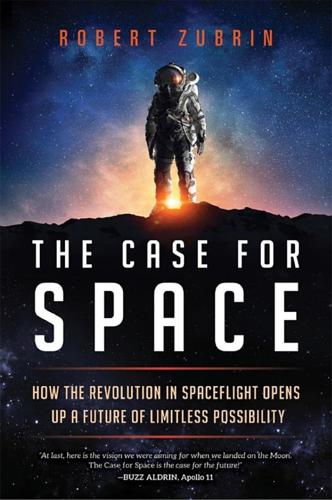
The Case for Space: How the Revolution in Spaceflight Opens Up a Future of Limitless Possibility
by
Robert Zubrin
Published 30 Apr 2019
John Wenz, “TESS Space Telescope Will Find Thousands of Planets, but Astronomers Seek a Select Few,” Smithsonian, September 26, 2018, https://www.smithsonianmag.com/science-nature/tess-space-telescope-will-find-thousands-planets-astronomers-seek-select-few-180970411/ (accessed October 22, 2018); Elizabeth Howell, “NASA's James Webb Space Telescope: Hubble's Cosmic Successor,” Space, July 17, 2018, https://www.space.com/21925-james-webb-space-telescope-jwst.html (accessed October 22, 2018). 3. Alison Klesman, “Where Does WFIRST Stand Now?” Astronomy, May 31, 2018, http://www.astronomy.com/news/2018/05/where-does-wfirst-stand-now (accessed October 22, 2018). For a more technical presentation, see N.
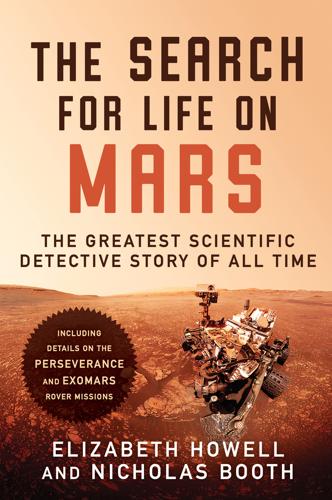
The Search for Life on Mars
by
Elizabeth Howell
Published 14 Apr 2020
There also was an instrument named Gulliver that would detect life by feeding Martian microbes with a “broth” of nutrients and observing their metabolic reactions. By 1967, the projected cost of this complicated mission had swelled from $700 million to $2.2 billion ($13.5 billion in 2018 dollars—even worse than today’s ballooning budget of NASA’s much-delayed James Webb Space Telescope in comparable dollars). Though everybody within the space agency wanted a piece of the pie, something had to give. Voyager’s prospects faded as NASA’s Vietnam-era budget was severely pruned by Congress. The original Voyager was canceled. In any case, it was already clear from Mariner 4 that many of the experiments considered originally would not have worked on Mars.
…
See Mars Insight Interplanetary Easter Egg Hunt, 252 interstellar grains, 304 ionization 48 ionosphere, 48, 322n iron, 8, 44, 51, 64, 65, 109, 133, 135, 232, 234, 237, 238, 291, 294 Isaak, Chris, 63, 323n Isidis Planitia, 254, 289 isotope, 73, 82, 111, 127, 183, 188, 230, 231, 232, 260, 281, 330n, 333n, 336n isotopic fractionation, 261, 285 Jakosky, Bruce, 47, 48, 51, 52, 53, 183, 189, 191, 322n, 330n, 346n, 354n Jagger, Mick, 43 James Webb Space Telescope (JWST), 94 Japan, 199, 200, 355n jarosite, 68 Jet Propulsion Laboratory (JPL), 12, 29, 35, 40, 43, 44, 46, 57, 58, 59, 62, 63, 64, 68, 69, 71, 84, 85, 94, 95, 96, 105, 107, 108, 117, 118, 130, 134, 137, 138, 146, 147–154, 156, 158, 161, 164–167, 173, 178, 196, 207, 208–213, 246, 247–248, 249–251, 254, 256, 261, 263, 272, 282, 283, 292, 296, 300, 327n, 331n Caltech origins, 86, 87 energy business, 150 history, 86–90, 91–93, 95–96, 99 mavericks, 87, 150 machinists, 251 Mars Yard, 66–67 Miss Guided Missile, 148 missiles, 87 mission design section, 150 misogyny and sexual misconduct, 145, 167, 352n relations with NASA, 70, 252 Section 23 “human computers,” 147, 148 Visitor Center, 86 women at JPL, 144, 147, 148, 167 Jezero Crater, 84, 254–258, 261, 263, 265, 266, 276, 279, 282, 287, 288, 289, 292, 360n Johnson, Catherine, 50 Johnson, Lyndon Baines, 117 JPL.

Ways of Being: Beyond Human Intelligence
by
James Bridle
Published 6 Apr 2022
Not only were both satellites polished and ready for launch, they were significantly more advanced than the closest civilian equivalent, NASA’s own Hubble Space Telescope – but, until the NRO’s phone call, they had been entirely secret. When Hubble was launched back in 1990, it was believed to be the most powerful telescope ever put into space. This probably wasn’t true then, and it certainly isn’t today: even after five costly repair missions by astronauts, Hubble is ageing fast, while its successor, the James Webb Space Telescope, only launched in December 2021. The sudden appearance of two brand new, cutting-edge instruments was a cause for celebration – ‘a total game-changer’, in the words of another astronomer. Moore called the optics on the new telescopes ‘astounding’, but NASA wasn’t forthcoming about the specifics.
…
Ross 181–3, 185 aspens 77 astrobiology 87 atomic bomb 224–5 Augustin, Regynald 156 Australopithecus 88 Author of the Acacia Seeds, The 169–71 automatic machine see Turing machine Autonomous Trap 26–7, 26, 204 autonomous vehicles 23–6, 65, 275 avocados 108 Babbage, Charles 30 baboons 32, 52–55, 64, 74 bacteria 17, 87–8, 104–10, 236–7, 248, 300 badgers 291 Barabási, Albert-László 81 Barad, Karen 84–6, 130, 249 Basilicata 138, 140–43 bears 1, 89–90, 92, 266, 290–91, 293–4 beavers 256 BeeAdHoc (computer programme) 262 beech 125, 142 Beer, Stafford 184–91, 211, 214–15, 230 bees 145, 187, 258–62 Bergson, Henri 279 Berners-Lee, Tim 81 birch 60, 118, 124, 138, 279 Black Language 168 Black Lives Matter 155 Blake, William 16 Blas, Zach 208 Boeing X-37 136 Bonner, John Tyler 238–9 bonobos 37, 50, 98 Boran (people) 146 Bornmuellera tymphaea 309 Boulez, Pierre 229 Boulle, Marcellin 90 Bouvet, Joachim 234 bow-wow theory 148 Brainfuck (programming language) 161–2 Brassica juncea 310 Bruniquel cave 92 buen vivir 268 cacti 64, 235, 294 Cage, John 227–35, 241, 242, 312 Cambridge Analytica 155 cantu a tenòre 148 capuchin monkeys 163 Caputo, Francesco 143 Caputo, Matteo 143 caribou 120 Carrol, Lewis 180 Carson, Rachel 12, 15 Castro, Eduardo Viveiros de 18 caterpillars 65 Cecilia (chimpanzee) 265 cedars 138 cephalopods 47–51 CERN 81 Charlotte (gibbon) 32 Chassenée, Bartholomew 252 Chaucer, Geoffrey 152 Chernobyl 293 Chesapeake Bay Model 202, 203, 204 chestnuts 61, 118 Children of Time 49 chimpanzees 36–37, 50, 55–6, 88, 98, 145 choice machine see oracle machine Christ Stopped at Eboli 140 Christmas Island 293, 295 Chua, Leon O. 194 Chucho (bear) 266 Churchill, Winston 18 Citizens’ Assembly 243–5 Clarke, Arthur C. 158 climate change 5–6, 121–4, 242–5, 282, 301–2 climate modelling 78–9 Cloud (computing) 111–12, 158–9 Cochran, William 285, 297 cockatoos 163 Cockroach Controlled Mobile Robot see Roachbot cockroaches 212, 258 cognitive diversity 246–8 Colossus (computer) 220 ‘Computing Machinery and Intelligence’ 29 Conway’s Game of Life 161 corn 75 Corraro, Rosina 143 cougars 290 Covid-19 114 cows 140, 143, 149, 265, 302 crabs 48, 195–7, 256, 293, 293–5, 293, 307, 312 cuckoos 118 cuttlefish 47, 49 Cybernetic Factory 185, 186, 189–90 Cybernetic Serendipity 231 cybernetics 181–90, 214 Dallol see Danakil Depression Danakil Depression 86–8, 104 Daphnia 188–9, 191, 198 Darwin, Charles 12, 34–6, 72, 89, 127–30, 129, 235, 239 Darwin, Francis 127–30, 129 De Anima 122 de Martino, Ernesto 141–2 de Waal, Frans 39 Debord, Guy 24 decentralization 49, 208–10, 213, 280 DeepMind 8, 275 deer 65, 77, 258, 290–93, 298–9, 299 Delphi 174, 177 demilitarized zone (DMZ) 292 Denisova Cave 96 denisovans 96–8, 100 Denny (denisovan) 97, 100 Descartes, René 16 Descent of Man, The 36 Dimkaroski, Ljubem 90 ding-dong theory 147 Dinkinesh (Australopithecus) 88 distributed computing 209 Divje Babe 90–91, 91 DNA 95–7, 103–7 dodder vine 75 dogs 147–8, 163, 302 spinal dog 184, 212 Dolphin Embassy 165–6, 165 dolphins 37–8, 41–2, 145, 166, 170, 263, 286 Doolittle, Ford 109–10 Duchamp, Marcel 128–31, 129 ducks 256 earthquakes 302–3 Ebonics 168 EDVAC (computer) 223, 230 Eglash, Ron 156 elephants 34, 38–9, 40–44, 41, 64, 250–51, 263–5, 278, 291–2, 296, 312 Elmer (robot tortoise) 180 Elsie (robot tortoise) 180 email apnea 155 Emojicode (programming language) 161, 173 endosymbiosis 108 ENIAC (computer) 225, 230 Epirus 1–5, 308–9, 311 Epstein, Jean 138 ERNIE (computer) 220–22, 221, 222, 226, 236 Euglena 188–91 Euler, Leonhard 81 European Green Belt 292 evolution 12, 54, 67, 71, 96, 102, 146, 164, 235, 241, 247, 311 of computers 222 convergent evolution 42, 51, 231, 262 Darwin’s theories 36, 89, 128, 132, 235, 256 process 107–12 randomness 235–40 tree of evolution 47, 50–51, 96, 100 Explanation of Binary Arithmetic 234 Facebook 154, 275 ethics 277 gender categories 111–12, 208 language applications 167–9, 173 Fensom, Harry 220 finches 132, 235, 239 firs 60, 142, 279 Flowers, Tommy 220 Folding@home 209 Forte, Giovanni 143, 144 fossil fuels 3–6 Franklin, Benjamin 248 Fredkin, Edward 195 Frisch, Karl von 259 fungi 11, 17, 60–63, 78–82, 106–8, 128, 192, 290 Gagliano, Monica 71–5, 127, 303, 319 Gaia (goddess) 174, 190, 215 Gaia theory 190 Gallup, Gordon G., Jr 36, 39 Ganges River 266 gannets 132 Gates, Bill 8, 275 Gaup, Ingor Ántte Áilu 150 Gebru, Timnit 277 geese 164, 170 General Morphology of Organisms 11 ghost populations 88, 98 gibbons 32–4, 33, 38–9, 42, 52, 64, 312 goats 1, 140, 143, 148, 293, 302 Göbekli Tepe 93–4, 93 Godfrey-Smith, Peter 50 Gombe Stream National Park 55 gomphotheres 108 Goodall, Jane 55–6, 263 Google 8, 111, 154, 211, 241, 269, 275 ethics 156, 277 oil and gas applications 5–6 language applications 163, 167, 169 gorillas 44–7, 44, 98 Grant, Peter 236 Grant, Rosemary 236 graph theory 81 Great Chain of Being 123 Greece 1–5, 114, 216 Greenpeace 5 Griffith, Frederick 105 grouse 150 Grumpy (elephant) 40 Guantánamo Bay 296 Gudynas, Eduardo 268 gulls 133, 256 habeas corpus 41, 264–6, 270, 296 Hadza (people) 146 Haeckel, Ernst 11–12, 105, 239–40, 240 Hagenback, Karl 254 Half-Earth Project 305–6 Happy (elephant) 39–41, 41, 263–5, 273, 296 Haudenosaunee see Iroquois Confederacy Hawira, Turama 267 hawks 256 hawthorn 118 Heritage Foundation 277 Herodotus 3 Hertz, Garnet 212–13 Hilbert, David 178 Hiller, Lejaren 230–31, 233 Hofstadter, Douglas 262 Holmes, Rob 203 homeostat, 181–3, 182, 187, 206, 215 honey 143–6 honeyguides 143–6, 164 horizontal gene transfer 105–7 hornbeam 118 Hotbits 222 HPSCHD (composition) 230–32 Hribal, Jason 253–5 Hubble Space Telescope 135 HUGO Gene Nomenclature Committee 154 Humboldt, Alexander von 239 Huxley, Aldous 113, 208 hyenas 257 hyperaccumulators 308–10 I Ching 228–231, 228, 234, 242 IBM 4–5 ICARUS (animal tracking) 284, 300, 302–3 ICHING (computer programme) 230–31 iguanas 296 ILLIAC (computer) 230 IM see instant messaging Inky (octopus) 48 instant messaging 152–3, 172–3 Institute of Contemporary Art 231 International Meridian Conference 116 International Space Station (ISS) 284 internet 80–82 Iroquois Confederacy 248 Island (novel) 113 Israeli Defense Forces 295 jackdaws 163 jaguars 294 jaguarundi cats 294 James Webb Space Telescope 135 jellyfish 180 Jenny (orang-utan) 34–6, 35 joik 149–50, 312 Keyhole (satellite) 136 Khan-Dossos, Navine 140 khoomei 149 Kidder, Tracy 117 King, William 89 King Solomon’s Ring 163 klepsydra 216–17, 217 klerotereion 218–19, 243 Koko (gorilla) 44, 45, 47 Konstantinou, Maria 309 Kowalsczewski, Bruno 91 Kropotkin, Peter 256–7, 279 Kunstforum der Natur 239, 240 Lack, David 132–3, 285 Land Art 203 Landsat 137, 137–9, 139 lapwing 256 laurel 174 Lavarand 222 Le Guin, Ursula 13, 169–71 Leakey, Louis 56 Lederberg, Esther 105 Lederberg, Joshua 105 Legg, Shane 8, 275 lemurs 163 Leptoplax emarginata 309 Levi, Carlo 141 lichens 107, 171 Liebniz, Gottfried 234 Lindauer, Martin 259–60, 284 lions 77, 257 Lord, Rexford 285, 297 Lorenz, Konrad 163–4 Lovelace, Ada 30 Lovelock, James 190 LUCA (last universal common ancestor) 103 Lucy (Australopithecus) see Dinkinesh Lukyanov, Valdimir 199–200, 199 lynx 290 macaques 42–4, 64, 254 machine learning 30, 63 Mandelbrot, Benoit 102 mangroves 138 Mansfield, Lord (William Murray) 264 Margulis, Lyn 108, 110, 112 Marino, Lori 38 Marsham, Robert 118 Marsham record 118–21 Matera 140 Maxine (elephant) 39 Maxwell, Sarah 301 McLuhan, Marshall 18 memristors 124–5 Merleau-Ponty, Maurice 150 Metropolis, Nick 225 mice 187 Michael (gorilla) 45, 47 Microsoft 5, 8, 154 Million Random Digits with 100,000 Normal Deviates, A 226, 226 mimosa 71–4, 127–8, 192, 195, 303 Mimosa pudica see mimosa Ministry for the Future, The 282 mirror test 36–46, 181 Mississippi Basin Model 201–2, 204 Mondrian, Piet 161 MONIAC 205, 205–7 Monte Carlo 225–7, 242 Moore, Michael 135 Morgan-Mar, David 161 moths 180 mouse-eared cress see rock cress Muir, John 11 Müller, Max 146–8 Müller, Urban 161 Museum of the Ancient Agora 216–18 Musk, Elon 8, 158, 275 Mutual Aid: A Factor in Evolution 256 mycorrhiza 60–62, 77–9, 81–2, 194 mynah birds 113 NASA see National Aeronautics and Space Administration Nasser, Ramsey 160–61 National Aeronautics and Space Administration (NASA) 135, 137–9, 284, 286 National Oceanic and Atmospheric Administration (NOAA) 137–8, 286 National Reconnaissance Office (NRO) 135 neanderthals 89–92, 94–8, 100 network theory 81 neural networks 24–5, 25, 82, 166, 275, 312 NEXRAD (Next-generation radar) 133, 134 Niassa National Reserve 143 nightingales 118 nightjars 118 non-binary activism 208 computing 208–9, 213, 312 identity 112 Nonhuman Rights Project 41, 263–5, 296 nutation 128, 197 oak 118–19, 124 ocelots 294 octopuses 111, 47–51, 73, 197, 209 oil industry 4–6 oleander 174 On the Origin of Species 11, 36, 89 Ook!
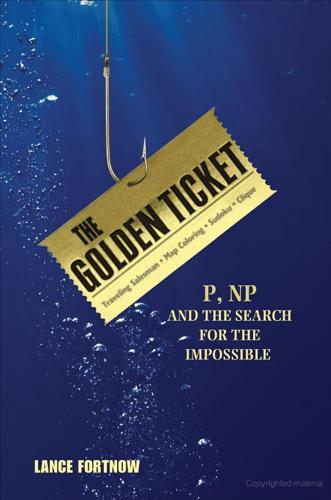
The Golden Ticket: P, NP, and the Search for the Impossible
by
Lance Fortnow
Published 30 Mar 2013
Dealing with Big Data In one second we create thirty-five minutes of YouTube videos, 1,600 Tweets, 11,000 Facebook posts, 50,000 Google searches, and three million emails (though 90 percent of them are spam). The Hubble telescope scans the cosmos from its orbit, sending down 200,000 bytes of data every second. A byte of data is about one alphabet symbol. The Hubble’s planned successor, the James Webb space telescope, basically a large parabolic mirror, will transmit to Earth up to 3.5 million bytes per second. The Large Hadron Collider lies along the French-Swiss border and is the world’s largest particle accelerator. On average it generates half a billion bytes of data every second. That’s every second of every year, and there are 31 million seconds every year.
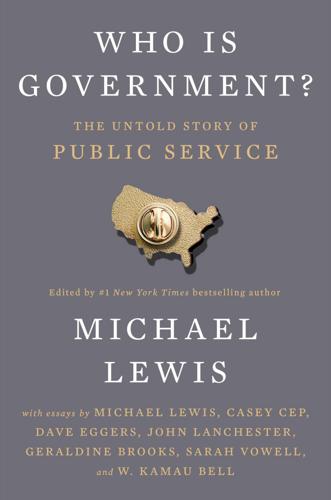
Who Is Government?: The Untold Story of Public Service
by
Michael Lewis
Published 18 Mar 2025
They built Ranger 7, the first American spacecraft to successfully send back images of the moon, in 1964. They built the Mars Opportunity rover. They helped build the Cassini Saturn orbiter, which in 2017 dove between the planet and its rings. (Did you miss that? I missed that. How did we miss that?) They built key parts of the James Webb Space Telescope and the Hubble. They’ve built spacecraft that have taken samples from passing comets, and Voyager 1 in 2012 became the first human creation to leave our solar system entirely. It’s currently 15 billion miles from Earth—and is still sending back data. * * * — In the cafeteria, I was surrounded by scientists from France, from Ukraine, from China, even from Queens, and while they ate burritos and Cobb salads, they talked about dark matter and sub-Neptunes and something called the “demographics of planets.”
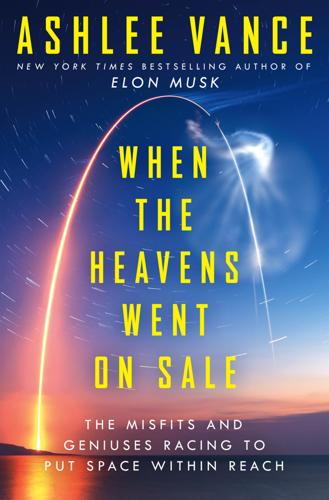
When the Heavens Went on Sale: The Misfits and Geniuses Racing to Put Space Within Reach
by
Ashlee Vance
Published 8 May 2023
They would begin the day hopeful that things would somehow click into place and perform their duties as if the rocket were a quick fix from blasting off. But as the engine tests, plumbing tests, and communications tests continued, something new would go wrong, and a fresh cycle of troubleshooting would begin. Carlson, a tall, bald man with a surfer’s calm affect, had worked on massive space projects such as the James Webb Space Telescope and SpaceX’s Dragon capsule. He took on the role of the experienced, trusted hand guiding the day-to-day operations, and all of the problems filtered up to him and were managed by him. To his credit, he never lost his cool. He’d nod while people explained whatever new disaster the day had brought, digest the information, and then take a deep breath in and relax his shoulders.
…
See Schingler, Jessy Kate (née Cowan-Sharp) Crawford, James, 122 Cube of Learning (Beck; sculpture), 149 CubeSat, 92, 93–94 Cupid, 438 Cyclone-4 rocket, 445 Dangerous Sports Club, 54 DARPA (Defense Advanced Research Projects Agency), 37–39, 116, 195–196, 199, 202, 285, 369–370, 374–375 deep-space exploration, 490 Defense Advanced Research Projects Agency (DARPA), 37–39, 116, 195–196, 199, 202, 285, 369–370, 374–375 Dell, Michael, 410n Delphin engine, 370 Delta Clipper, 47 differential drag, 32, 109 DirectTV, 443n DISCOVERER, 116 diversity, lack of, 287, 288 D’Mello, Shaun, 215, 219, 231 Dnipropetrovsk (Dnipro), 438–443, 444, 447–448, 450 Dotcom, Kim, 138 Doves (satellites), 27, 31–32, 96, 103–106, 109–110, 227, 396 Dragon capsule, 327 EchoStar, 443n Edwards Air Force Base, 173, 412 Electron rocket concept for, 139, 209 construction of, 140–141 first launch and, 226–227 flight frequency of, 16 kick stage for, 230–231 launch challenges and, 214–218, 220–221 Markusic and, 424 Planet Labs and, 107 reusability and, 490 schedule and, 224 second launch and, 227–228 size comparison of, 395 success of, 337–338, 365, 369 third launch of, 238–241 work on, 209–213 Elizabeth II, Queen, 84 Energia rocket, 437 English, Christa, 410, 411, 417, 419, 424, 465 EOS Data Analytics, 433 Escapia, 59, 273 European Space Agency, 83 Eveleth, Decker, 112–115, 119 expected casualty analysis, 345 Expedia, 273 FAA, 330–331, 332, 336, 343, 345 Falcon 1, 2–13, 16, 20, 38, 40, 56, 188, 208, 397, 415, 419, 426 Falcon 9, 12, 141, 395, 428, 490 Farrant, Ben, 289–290, 370, 391 Fay, Michael, 190–192, 193, 203, 216–217 Federal Communications Commission, 131 Ferraro, Matthew, 101 Firefly Aerospace Astra and, 493 delays and, 466–467 first launch and, 479 founding of, 404–405 funding and, 455, 464–465, 470–471, 475 goals of, 402, 403–404 increase rocket size and, 455 launch license denial and, 472, 485 Polyakov and, 434–436, 457–458 Polyakov’s ouster and, 484–486 setbacks for, 458–459 SpaceX and, 403 success of, 486 in Ukraine, 448–450 value of, 476 Firefly Farm, 466 Firefly Space Systems advantages for, 208 bankruptcy of, 429, 433–434 founding of, 423–427 funding and, 428–430 goals of, 207, 427 launch vehicles of, 395 Martin and, 356 Polyakov and, 433–434 Rocket Lab and, 214, 230 US government agreement and, 456 Vandenberg Air Force Base and, 460–464 Fisher & Paykel, 154–157, 159, 161, 163, 165 Five Eyes intelligence-sharing group, 222 Flanagan, Matthew, 339, 356–362, 391 Fleet Space Technologies, 238–239 Fleming, Shane, 218 flight termination systems, 225, 227, 286, 344–345 Flirt, 438 4D, 274–275, 489 FuckedCompany.com, 274 Gamma, 426 Garcia, Ian, 290, 329 Garver, Lori, 67 Gates, Bill, 387, 388 Gemini mission, 42 Gentile, Bryson, 311–314, 317, 379 geolocation data, 125–126 Gies, Bill, 287–288, 338–340, 391 Gillies, Daniel, 234n Gillmore, Chester, 108 Goddard, Robert, 145 Google Ames Research Center and, 58, 61, 64–65 Google Earth, 120 Google Maps, 120 Google Mars, 64, 276 Google Moon, 64–65, 276 PhoneSat project and, 93 Skybox Imaging and, 111n Gorbachev, Mikhail, 47n GPS chips, 303 Grassley, Chuck, 68 Great Mercury Island, 190–191, 202–203 Griffin, Michael, 43, 54, 59 Guiana Space Center, 397 hacker houses, 73 Halley’s Comet, 153–154 Hawking, Stephen, 86 HitDynamics, 438 Hofmann, Chris, 338–339, 346, 350, 379, 382, 391 Holicity, 387 HomeAway, 273 Hopkins, Anthony, 148 Houghton, Samuel, 199–201 Howard, Ben, 101, 103, 106, 488 Hubble Space Telescope, 43 Humanity Star, 227–228 Hundley, Lucas, 281–282 Hydra, 447 hydrogen peroxide, 159–161 Hyperloop, 356 ICBM factory in Dnipro, 440, 444 image analysts, 118–119 imaging satellites, 98–99 India Pakistan and, 123–124 space program in, 27–28 Indian Space Research Organisation (ISRO), 27, 29–30 Industrial Research Limited (IRL), 169–171, 179, 181, 184 Industrial Revolution, 145 Ingels, Bjarke, 312 Instant Eyes project, 195–196, 199–201 International Astronautical Congress, 49, 86 International Space Station (ISS), 13, 105, 107, 436 International Space University, 66, 86–87 International Talk like a Pirate Day, 79 International Traffic in Arms Regulations (ITAR), 66, 233–234 internet service, satellites and, 14, 18, 128–130, 487–488 Intimidator 5, 91 ion thrusters, 450 Iridium, 129, 388 Israel Defense Forces, 119 ITAR (International Traffic in Arms Regulations), 66 jade, 149 James, Deborah Lee, 475 James Webb Space Telescope, 327 Jazayeri, Mike, 365n Jet Propulsion Laboratory (JPL), 43, 85, 174–175 Jobs, Steve, 63 Jornales, Rose, 286–287, 391 Joyce, Steven, 221, 223 Judson, Mike, 290–291, 307, 317, 318, 324 Jurvetson, Steve, 91, 102, 104n, 105, 488 Keeter, Milton, 330–331, 332, 338–340, 343–346, 391 Kelly, Isaac, 326, 338–342, 391 Kemp, Chris Ames Research Center and, 59–61, 276 Astra going public and, 385, 387–388, 390–391 Beck and, 365–366 Brockert and, 292 budget issues and, 326 Burning Man and, 253–254 company name and, 294–295 “Dawn of Space” party and, 295–296 engine tests and, 282–283, 307 financial issues and, 370–372, 374, 378, 381–382 funding and, 296–297, 365, 366, 383 goals of, 309–310, 384 Google and, 64–65 on himself, 267–277 Jessy Kate and, 324–325 Judson and, 291n launch attempts and, 316, 361, 376, 380, 382–383, 393 launch delays and, 334 launch failures and, 336, 337, 347, 349, 350–354, 364 launch locations and, 280, 304 launch preparations and, 331–333 life advice from, 308 living arrangements of, 102n loss of driver’s license and, 297–299 Lyon and, 390 Marshall and, 85 Martin and, 356, 357–358 media attention and, 317 moving rocket and, 305, 306 Open Lunar Foundation and, 488 OpenStack and, 250–253 Polyakov and, 468–469 Rainbow Mansion and, 72–73 recent work of, 489, 492–493 Rocket Lab and, 338 security and, 301 simplicity of design and, 279 Skyhawk space and, 310–314, 367–369 status meetings and, 281 Stealth Space Company and, 260–263, 265 Thompson and, 348–349 transparency of, 394 Ventions LLC and, 250, 257–258 Whitesides and, 423 Kennedy, Fred, 13, 37–38 Kennedy Space Center, 174 Kessler syndrome, 131 Key, John, 220, 221, 222, 223 Khosla Ventures, 206–207, 209, 214 Khrushchev, Nikita, 440 King, P.
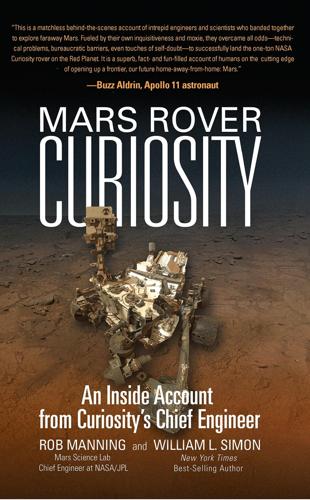
Mars Rover Curiosity: An Inside Account From Curiosity's Chief Engineer
by
Rob Manning
and
William L. Simon
Published 20 Oct 2014
First-of-a-kind projects are nail-biters all the way, for reasons that you’ll find many examples of in these pages. Many have gone way over budget, others stayed within budget but failed. At the same time, it wasn’t hard to understand the dilemma NASA would be faced with. Among other projects in the queue for major funding was the huge James Webb Space Telescope (JWST). Intended to replace the Hubble Space Telescope, JWST has been described by NASA as providing a way of studying “every phase in the history of our Universe, ranging from the first luminous glows after the Big Bang, to the formation of solar systems capable of supporting life on planets like Earth, to the evolution of our own Solar System.”
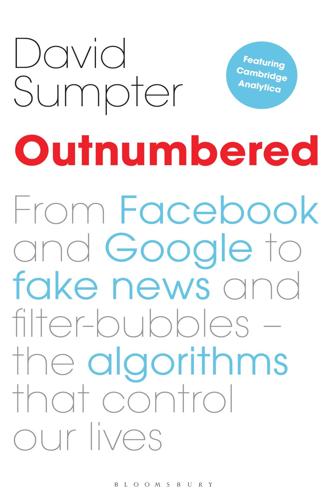
Outnumbered: From Facebook and Google to Fake News and Filter-Bubbles – the Algorithms That Control Our Lives
by
David Sumpter
Published 18 Jun 2018
This goo could be created by scientists on a very small scale, developing the ability to reproduce and ‘eating’ everything on our planet. If we are going to go as science fictiony as general AI, then we also need to consider how we might prepare for the discovery of alien intelligence when the James Webb Space Telescope starts taking more detailed pictures of our universe. What do we do if we find that the stars are moving in a way that contradicts the rules of physics and can only be explained by extraterrestrial intelligence? And what about the theory in The Matrix that we are all living in a computer simulation?

SAM: One Robot, a Dozen Engineers, and the Race to Revolutionize the Way We Build
by
Jonathan Waldman
Published 7 Jan 2020
Nate had long before figured out that when visiting construction sites, it was wisest to park far from the action, to avoid a nail in the tire of his car. VI. Years later, PMD would make the robotic machine that placed, within a thousandth of an inch, a dozen and a half ninety-pound gold mirrors on the James Webb space telescope, the successor to Hubble. VII. He was also a creature of habit. He bought four Buick LeSabres in a row—long after Buick stopped making the model. 3. Dream Machines Bricklaying robots have entered the imaginations of many men, but few have tried to build them. Many dreamers, in a sadly parasitic manner, have taken out patents on ideas—and then sat there, like Venus flytraps, waiting for tinkerers like Scott to come along and do the work for them.
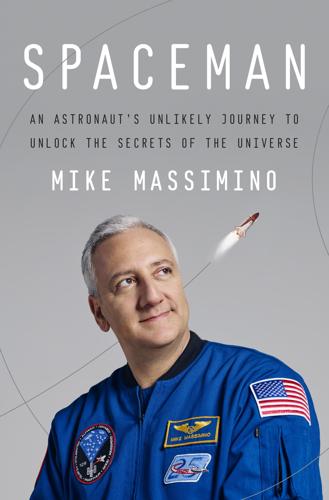
Spaceman: An Astronaut's Unlikely Journey to Unlock the Secrets of the Universe
by
Mike Massimino
Published 3 Oct 2016
That number should be going in the opposite direction. Our space program is in a period of transition. Some doors are closing and others we’re still trying to open. But the difficulty of our present moment should inspire us, not discourage us. There’s so much for us to achieve if we decide, as a nation, to commit ourselves to it. The James Webb Space Telescope, Hubble’s successor, is set to launch in 2018. Private companies like SpaceX and Virgin Galactic and Blue Origin are putting rockets into space, creating a whole new range of exciting opportunities. The international cooperation behind the space station has put a wealth of resources at our disposal that the Mercury and Apollo teams never had.

Human Frontiers: The Future of Big Ideas in an Age of Small Thinking
by
Michael Bhaskar
Published 2 Nov 2021
As in the seventeenth century, a constellation of tools will alter our perception of the universe. Despite the challenges, and beyond AI, the outlines of a toolkit for the new millennium are coming into view. We too have our telescopes. Just look at those now coming into operation: the Square Kilometer Array in South Africa, capable of generating exabytes of data; the $9.7 billion James Webb Space Telescope, with six times times the light-gathering capacity of the Hubble Space Telescope; the Extremely Large Telescope in Chile, with a 39m primary mirror gathering a hundred million times the light available to the human eye and providing images sixteen times sharper than the Hubble; Breakthrough Listen's global push for extraterrestrial intelligence; and the new generation of gravitational wave instruments among them.

What to Think About Machines That Think: Today's Leading Thinkers on the Age of Machine Intelligence
by
John Brockman
Published 5 Oct 2015
Consequently, if life on exoplanets is not extremely uncommon, we could discover some form of extrasolar life within about thirty years. In fact, if life is ubiquitous, we could get lucky and discover life even within the next ten years, through a combination of observations by the Transiting Exoplanet Survey Satellite (TESS, to be launched in 2017) and the James Webb Space Telescope (JWST, to be launched in 2018). One may argue that primitive life-forms are not machines that think. On Earth it took about 3.5 billion years from the emergence of unicellular life to the appearance of Homo sapiens. Are the extrasolar planets old enough to have developed intelligent life?

These Strange New Minds: How AI Learned to Talk and What It Means
by
Christopher Summerfield
Published 11 Mar 2025
The bloody war between Russia and Ukraine ground painfully on, with heavy casualties on opposing sides, and evidence began to surface of terrible atrocities committed in towns occupied by Russian forces. In Pakistan, floods of biblical proportions submerged more than a third of the country, displacing or inundating more than thirty million people. On a happier note, the first images began to arrive from the James Webb Space Telescope, whose massive, flawless, twenty-foot mirror had been successfully unfolded in space, allowing astronomers to peer into the depths of the universe. But when ChatGPT was launched in November 2022, it didn’t know about any of these events. If you asked it about the momentous events of that year, it turned shifty and evasive, and claimed not to know anything that had happened since September 2021.
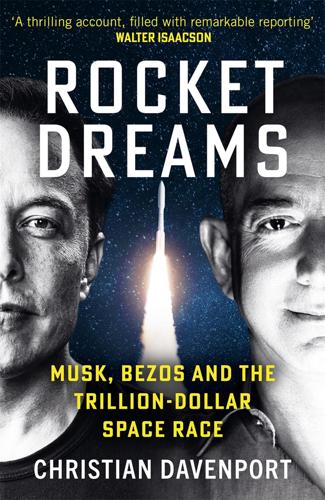
Rocket Dreams: Musk, Bezos and the Trillion-Dollar Space Race
by
Christian Davenport
Published 6 Sep 2025
“Far better it is to dare mighty things,” it read, “to win glorious triumphs, even though checkered by failure, than to take rank with those poor spirits who neither enjoy much nor suffer much, because they live in a gray twilight that knows not victory nor defeat.” NASA was on a winning streak. A regular rotation of flights was sending astronauts to space from U.S. soil. NASA was poised to launch the James Webb Space Telescope, which would look back through time to the beginnings of the universe. Through its partnerships with private industry, NASA was building new space suits and developing commercial space stations to replace the aging International Space Station. A fleet of privately built robotic spacecraft were also beginning to fly in a series of missions to the moon.
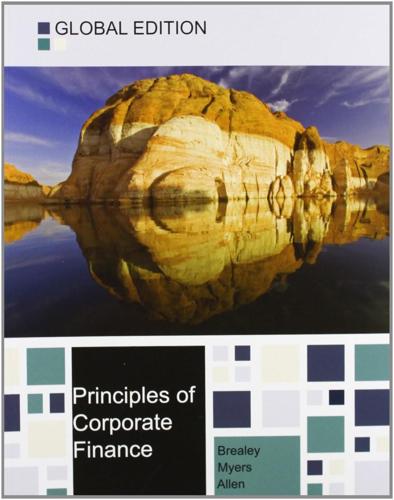
Principles of Corporate Finance
by
Richard A. Brealey
,
Stewart C. Myers
and
Franklin Allen
Published 15 Feb 2014
The opportunity cost of using the plane is equal to the cost of buying an equivalent aircraft to replace it. Forget Sunk Costs Sunk costs are like spilled milk: They are past and irreversible outflows. Because sunk costs are bygones, they cannot be affected by the decision to accept or reject the project, and so they should be ignored. Take the case of the James Webb Space Telescope. It was originally supposed to launch in 2011 and cost $1.6 billion. But the project became progressively more expensive and further behind schedule. An independent review board reported that the giant telescope could end up costing up to $6.5 billion and wouldn’t launch until 2015 at the earliest.
…
See Internal rate of return (IRR) Irrevocable letter of credit, 782 Ishii, J. L., 826n ISS, 304 Italy, nominal versus real exchange rates, 701–703 ITT, 842, 848, 849 Ivanhoe, 390n J Jackson, G., 878 Jack Wolfskin, 848 Jacquier, E., 163n Jaguar Land Rover, 807 James, C. M., 812n James Webb Space Telescope, 135 Japan bubbles in, 332, 334, 885 company financing in, 863 foreign bonds in, 616 growth and declining industries in, 874–875 just-in-time approach, 781 mergers and, 809 ownership and control in, 865–866, 869 short-termism in, 874 Japan Airlines, 855 Jarmin, R. S., 839n Jarrell, G., 96n, 405, 405n JBS, 827 J.C.

She Has Her Mother's Laugh
by
Carl Zimmer
Published 29 May 2018
By the 1970s, the first generation of people treated for PKU since birth reached adulthood. They could finish school, hold jobs, have ordinary lives. In 2001, a graduate student named Tracy Beck became the first person with PKU to gain a PhD. She became an astronomer, helping to build the James Webb Space Telescope. For thousands of years, people who inherited the mutations in Beck’s PAH genes would have looked to the sky and not known the word for the lights they saw. Now Beck was helping to extend humanity’s gaze to the farthest edges of the universe. * * * — In 1957, the Vineland Training School decided to test all their students for PKU.